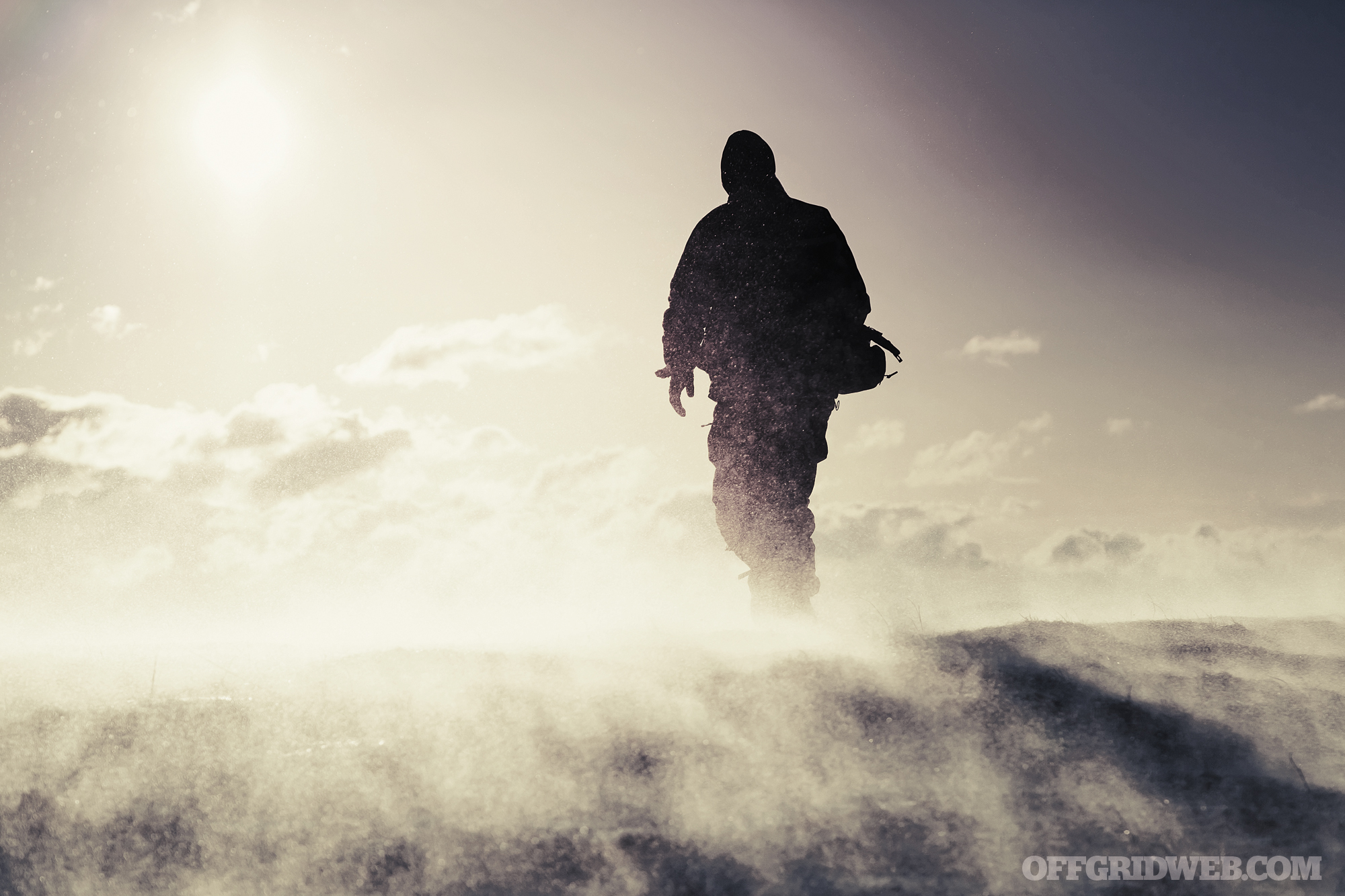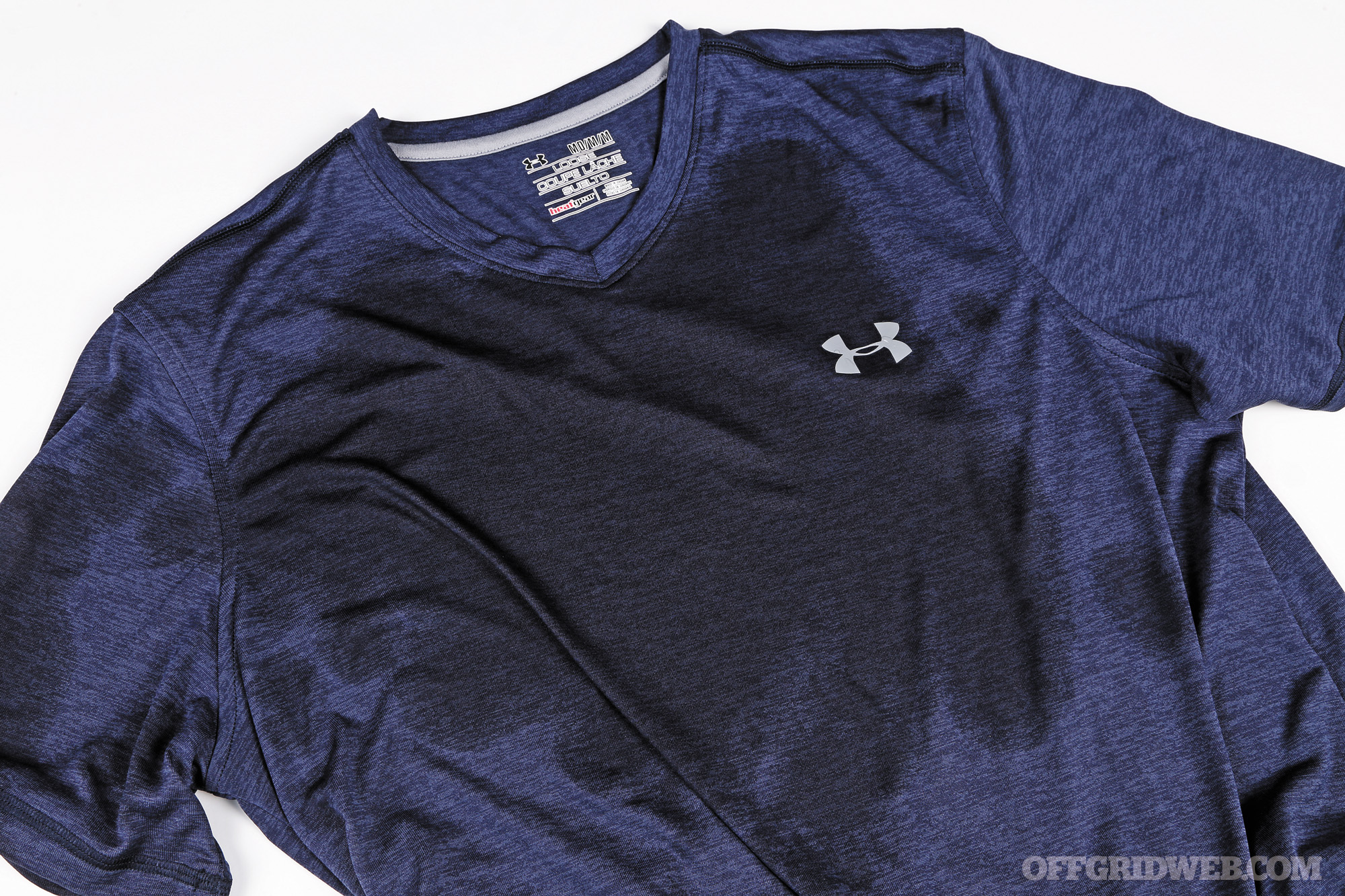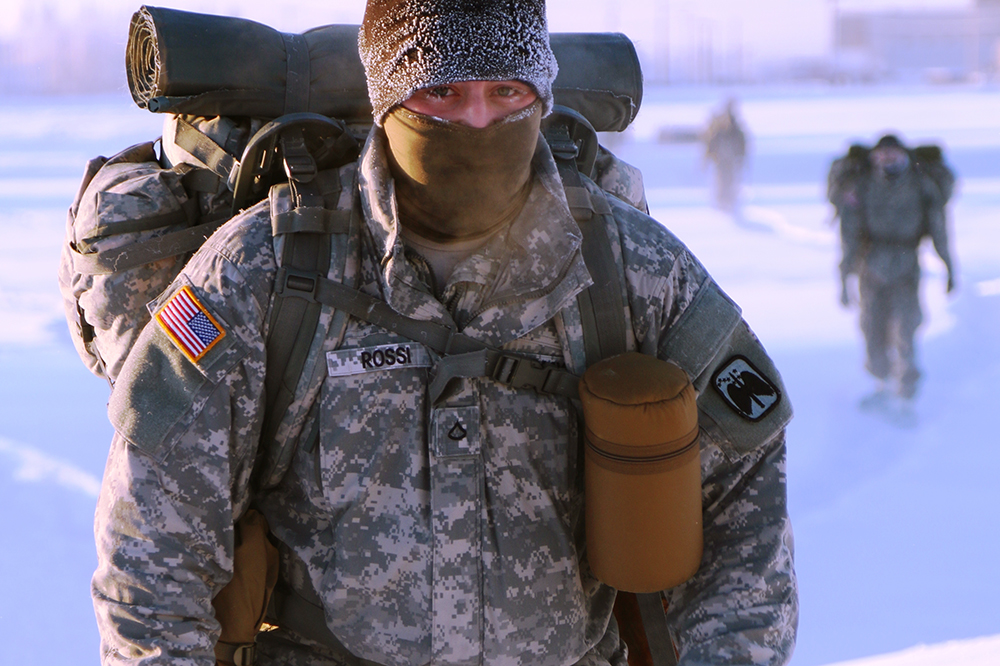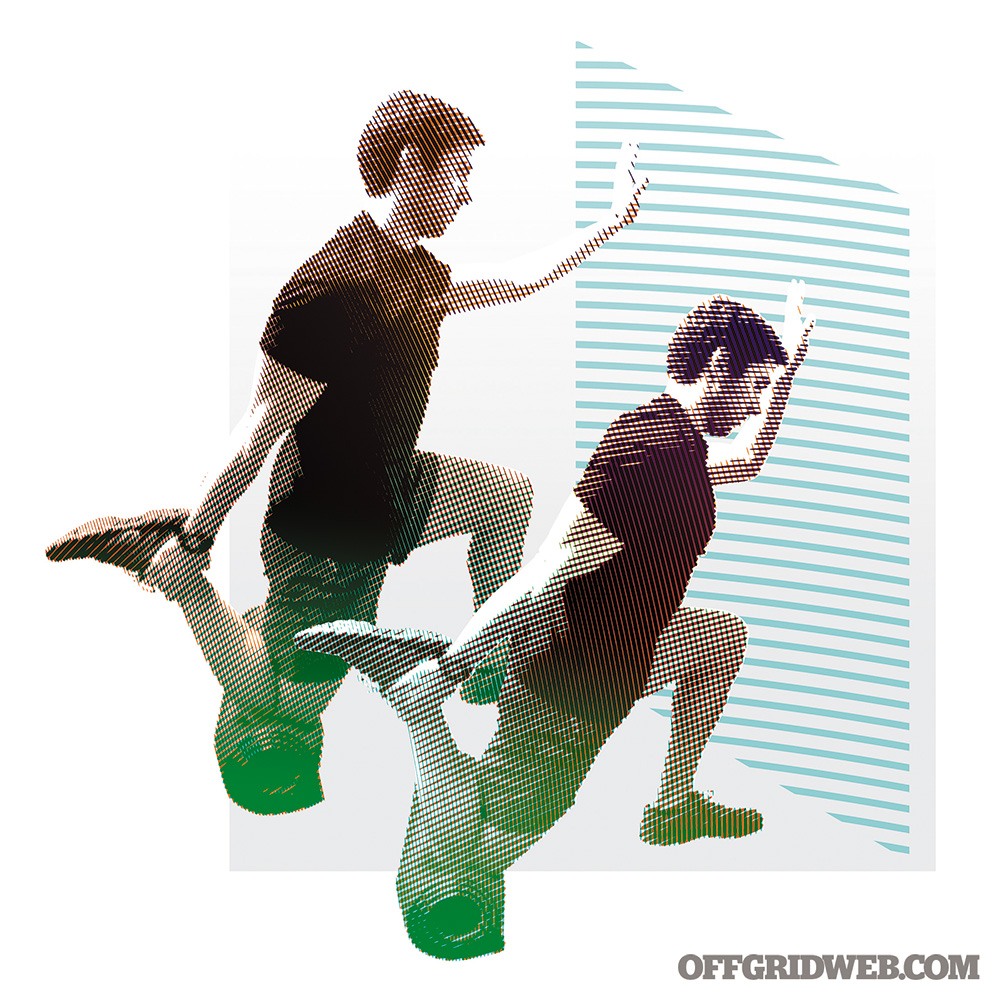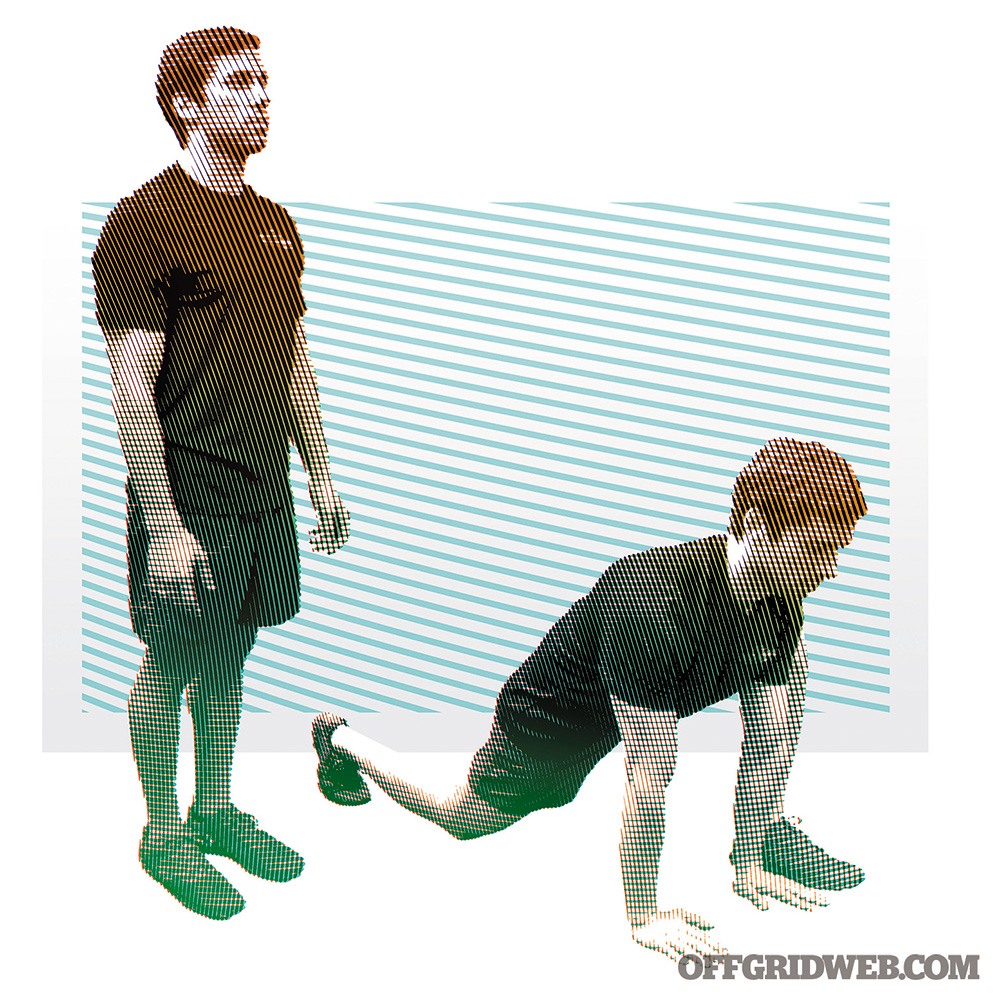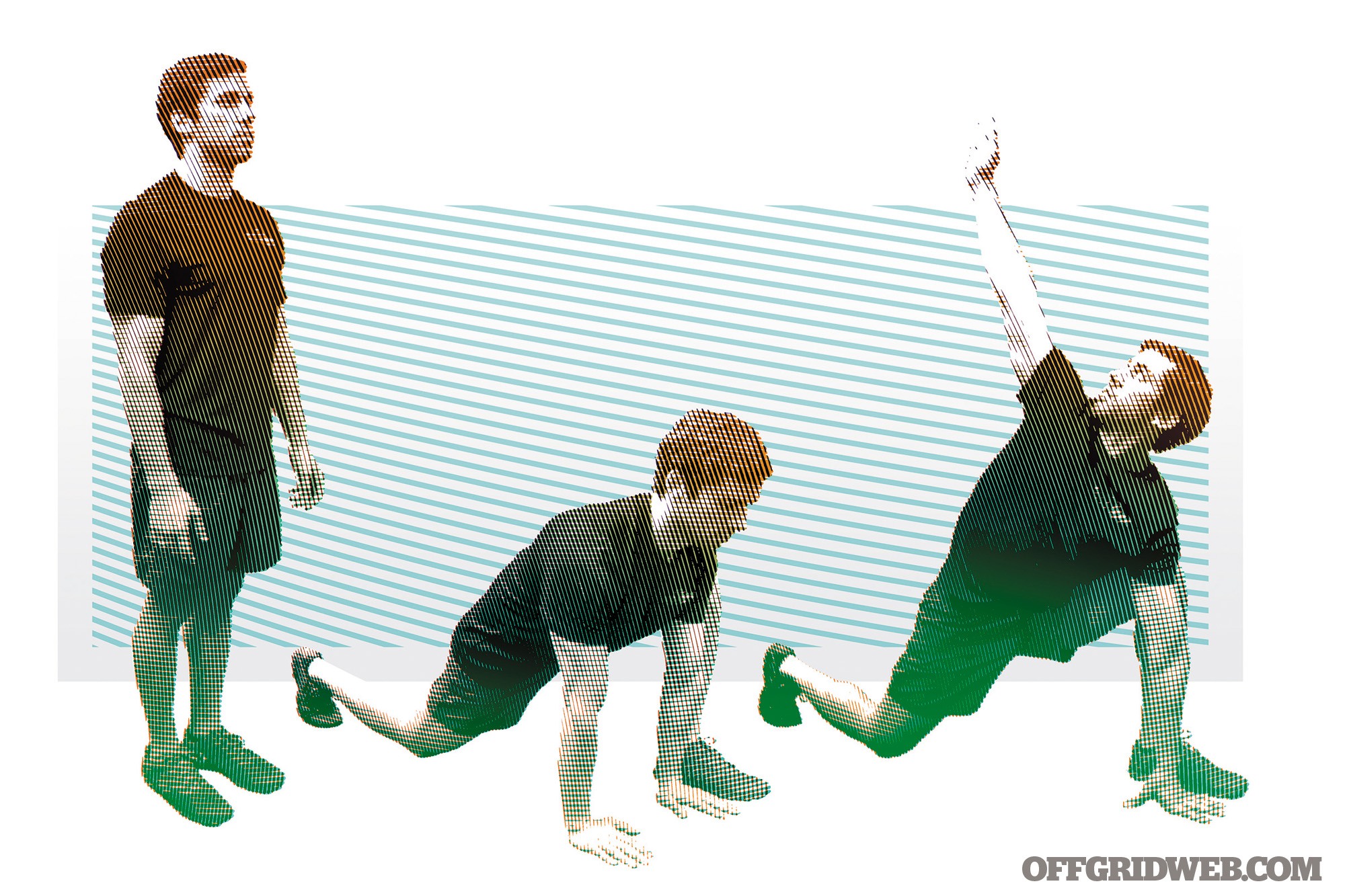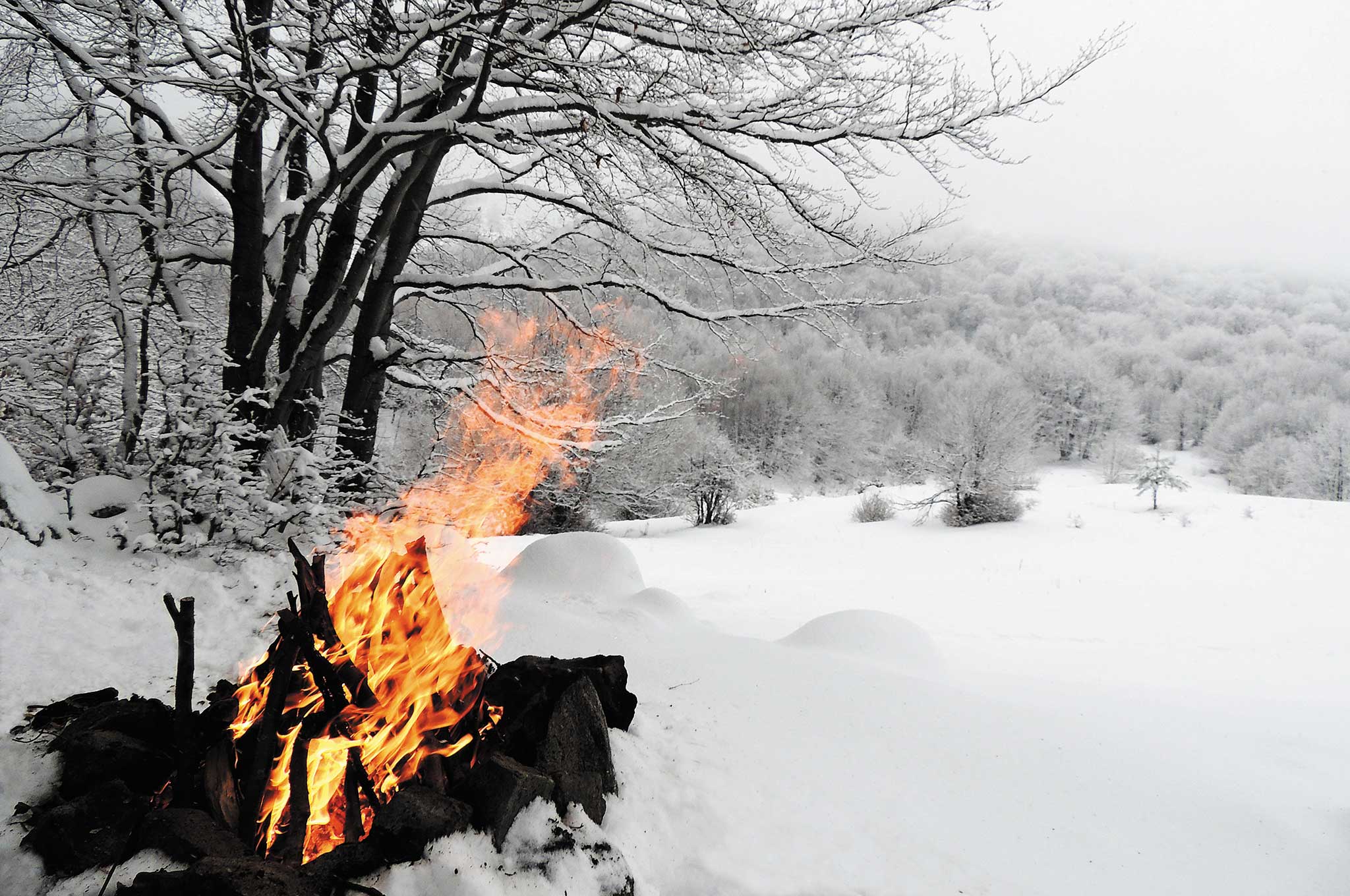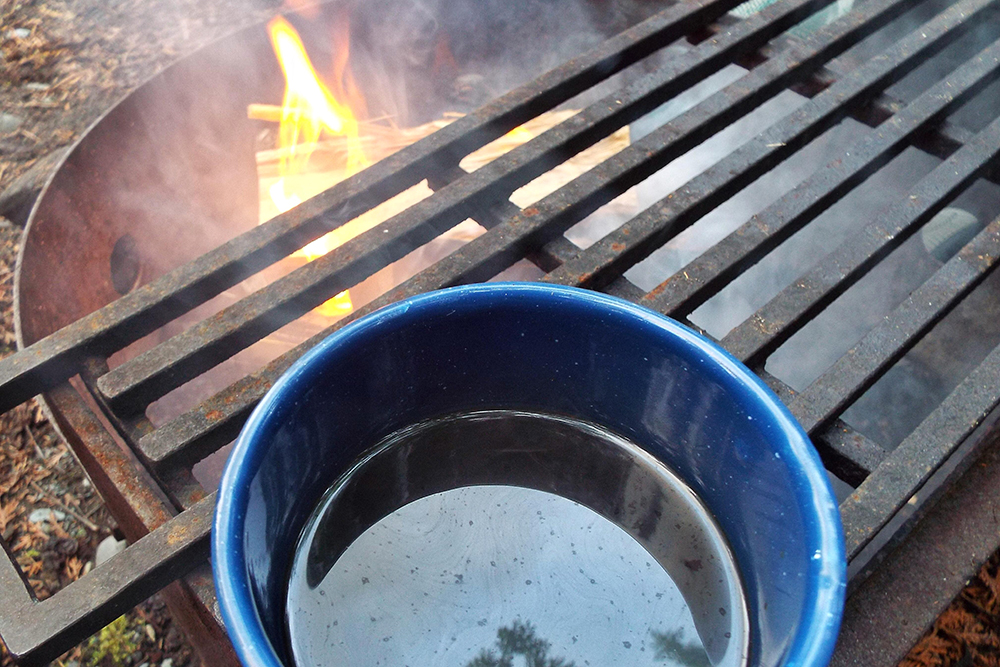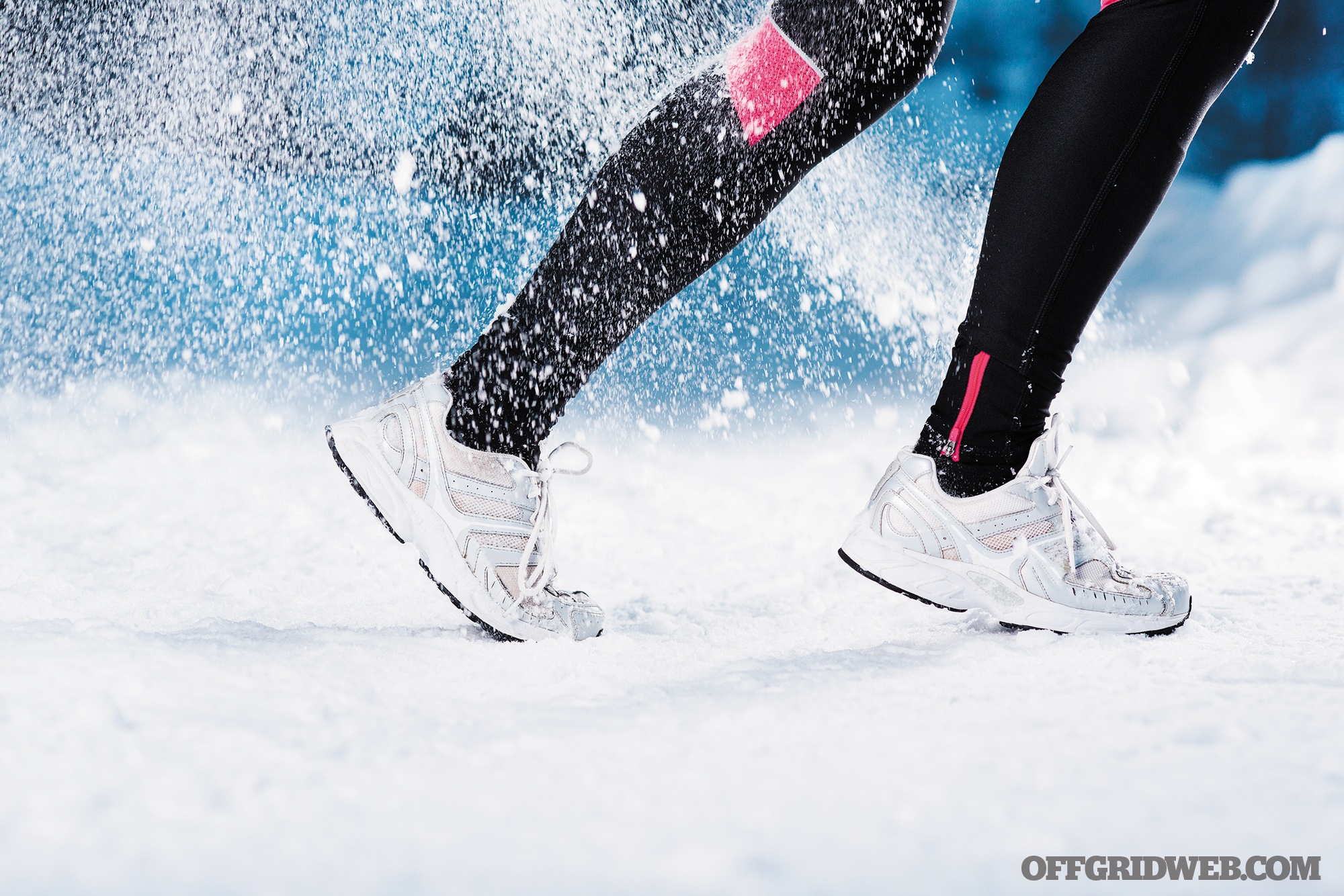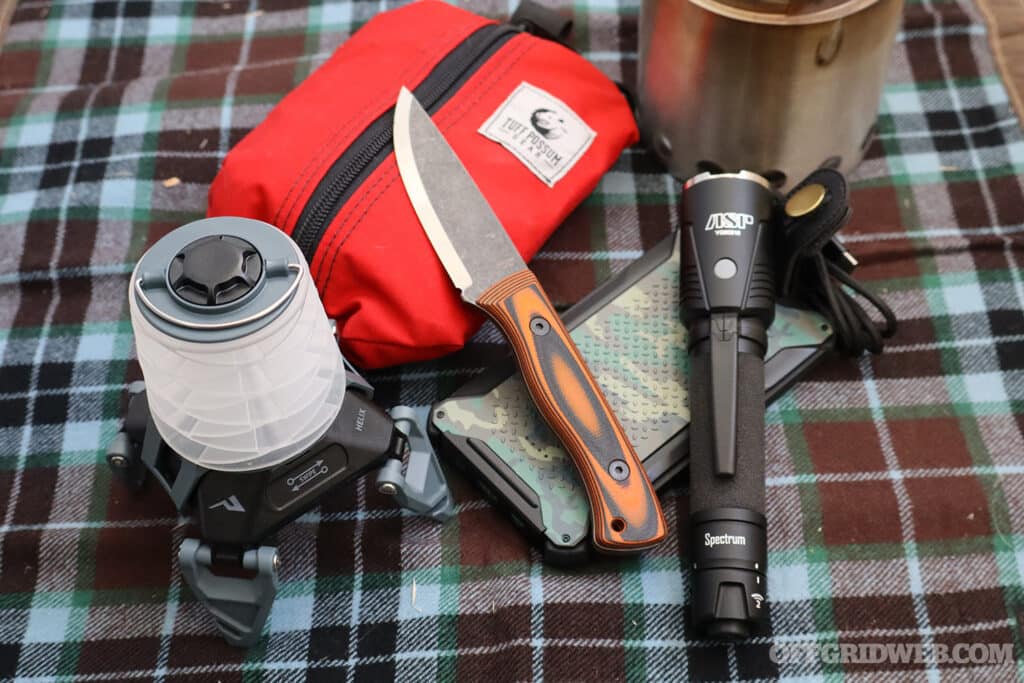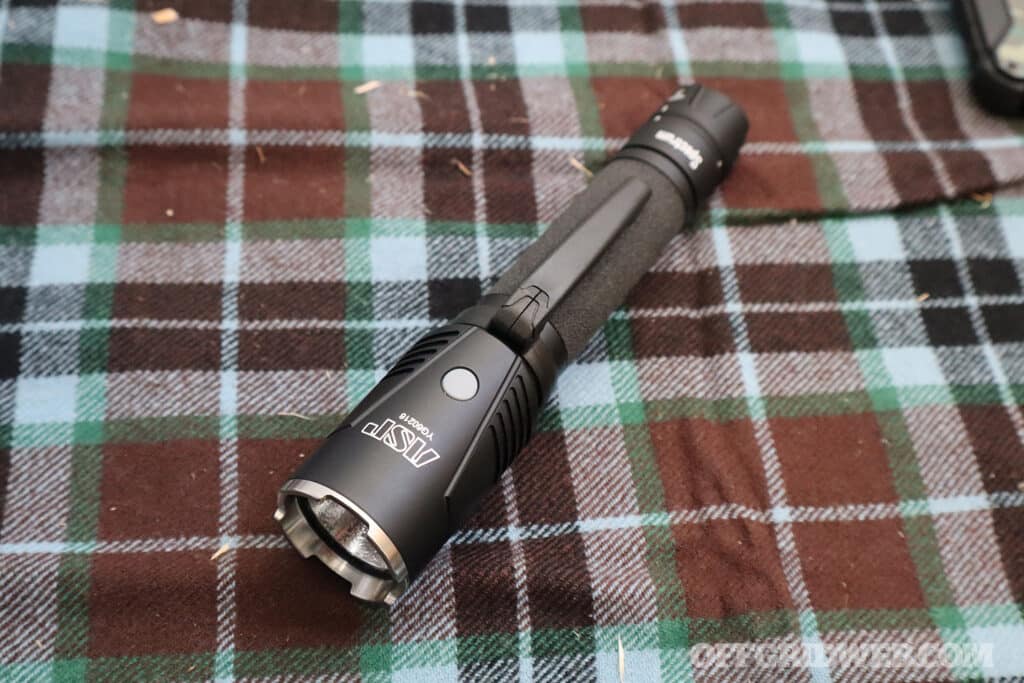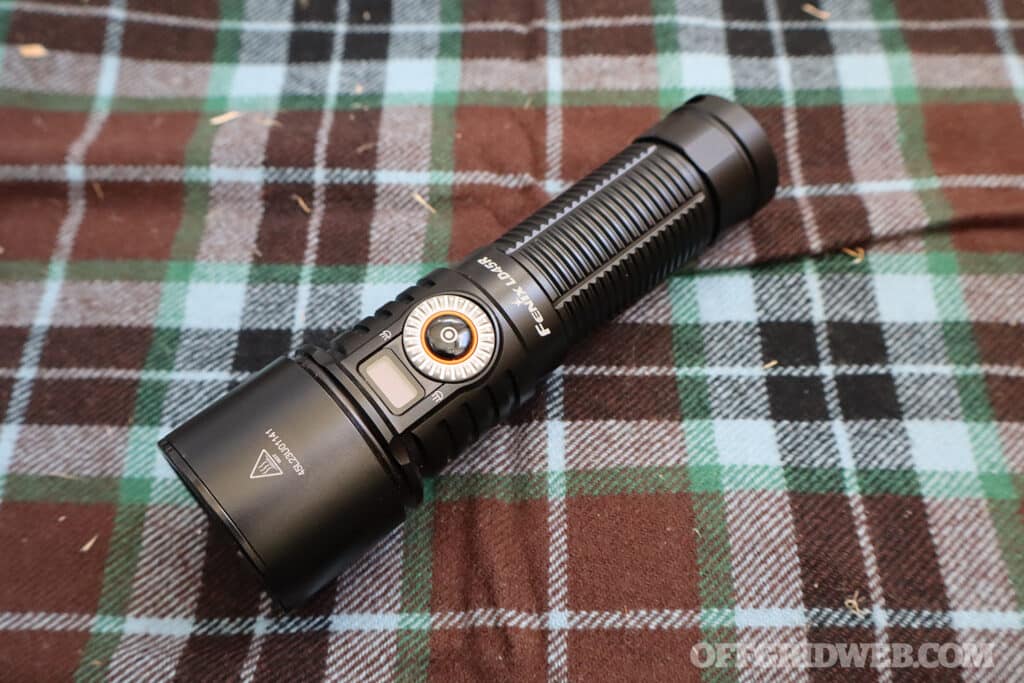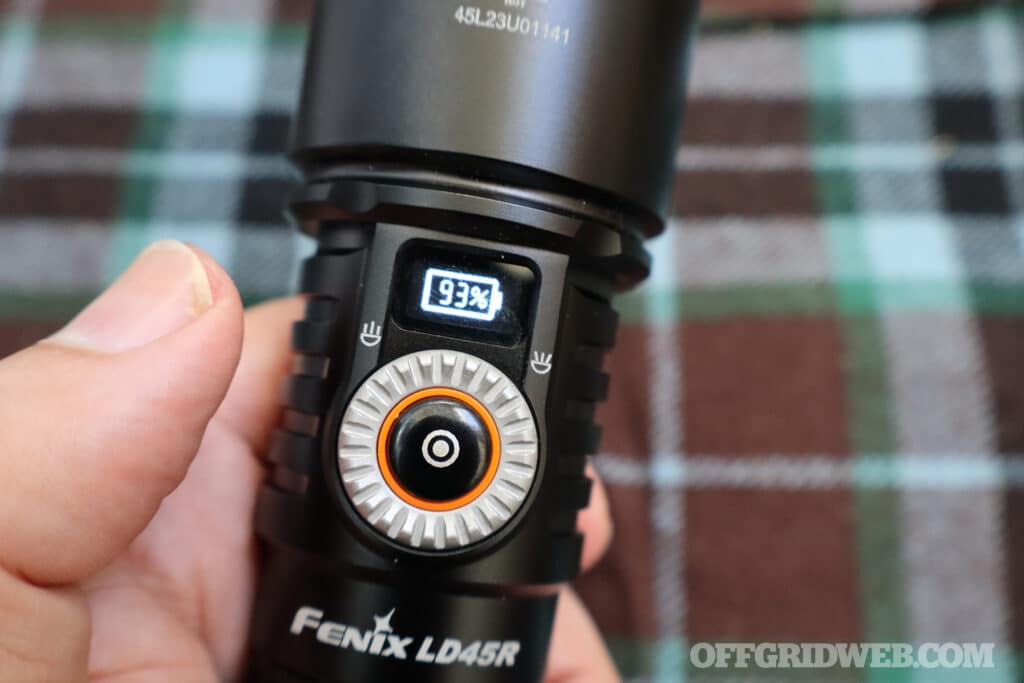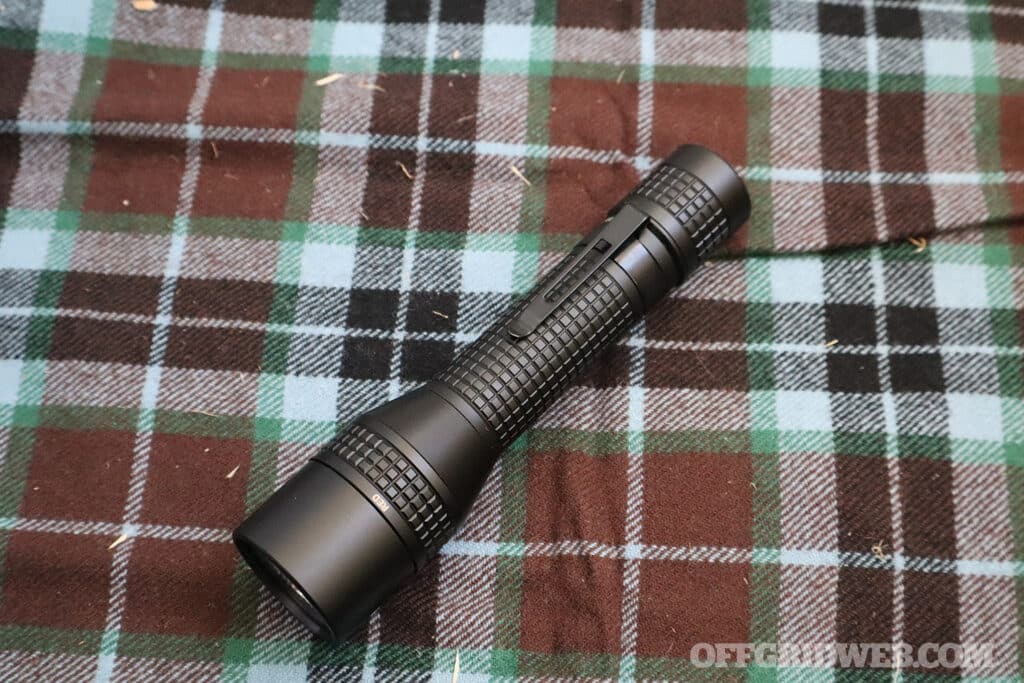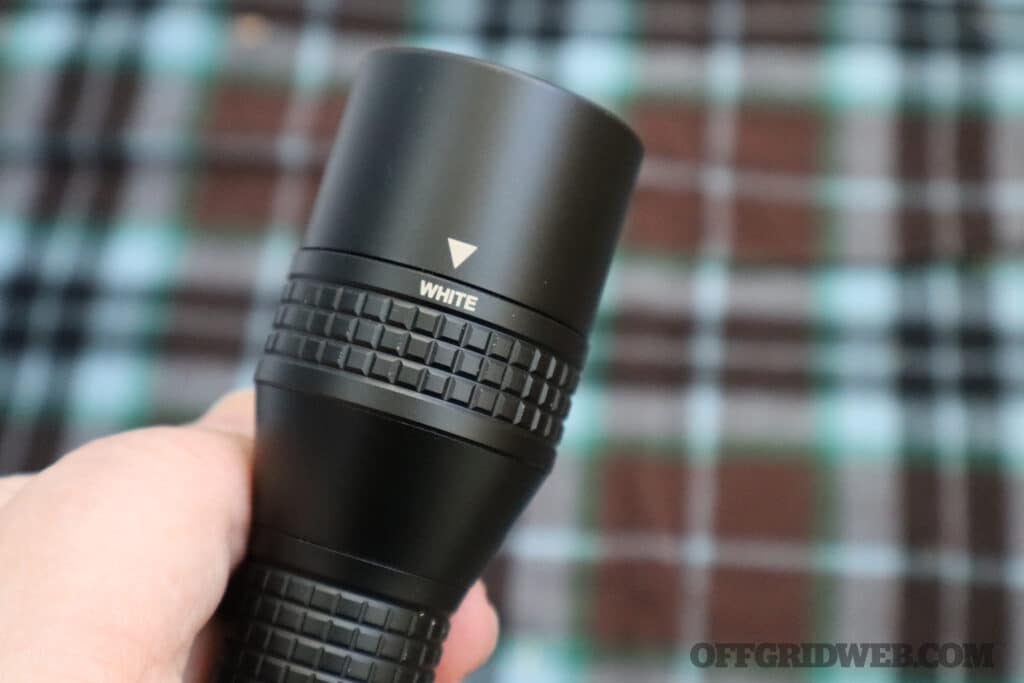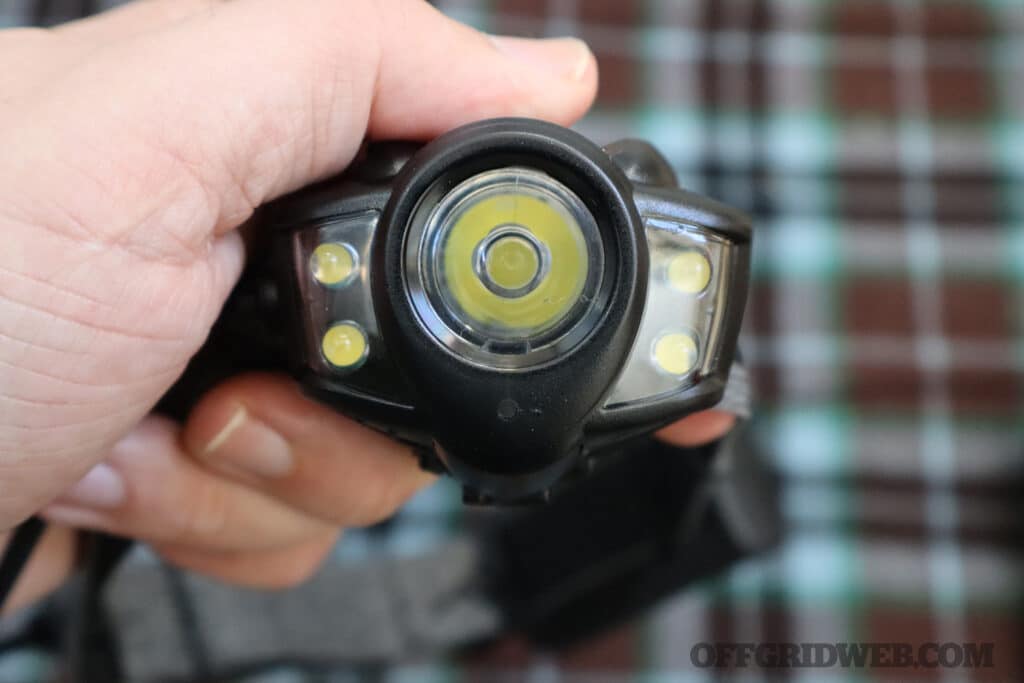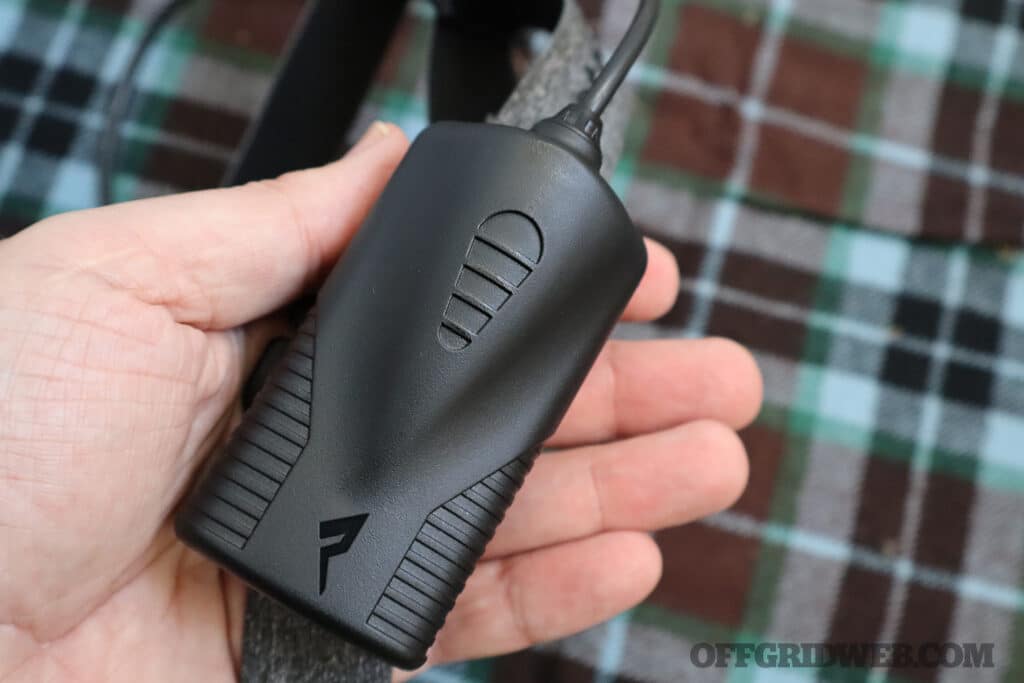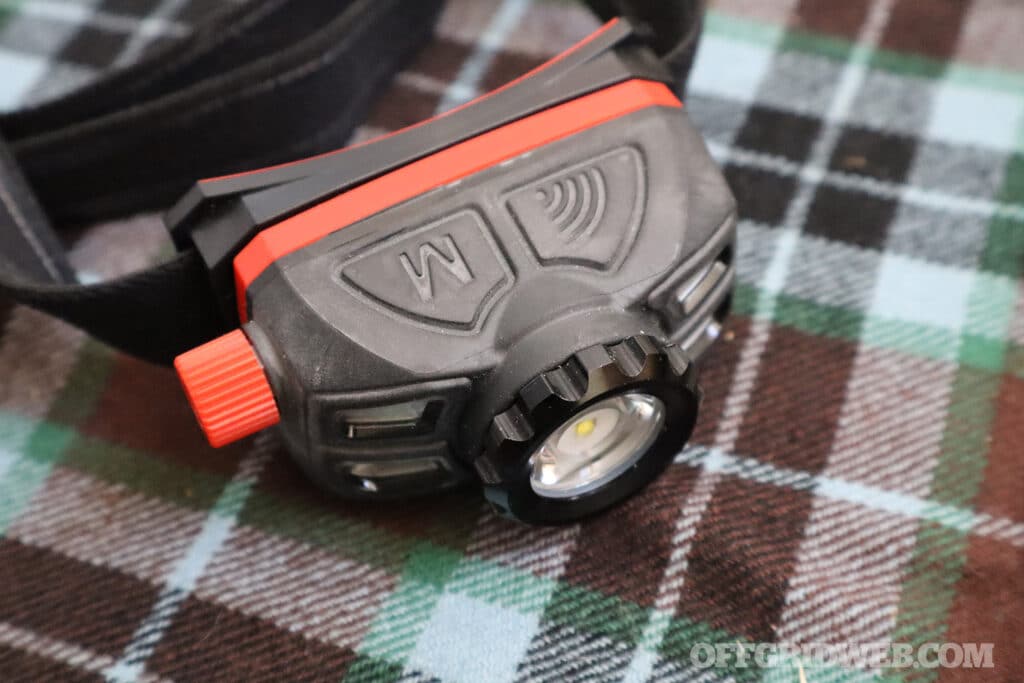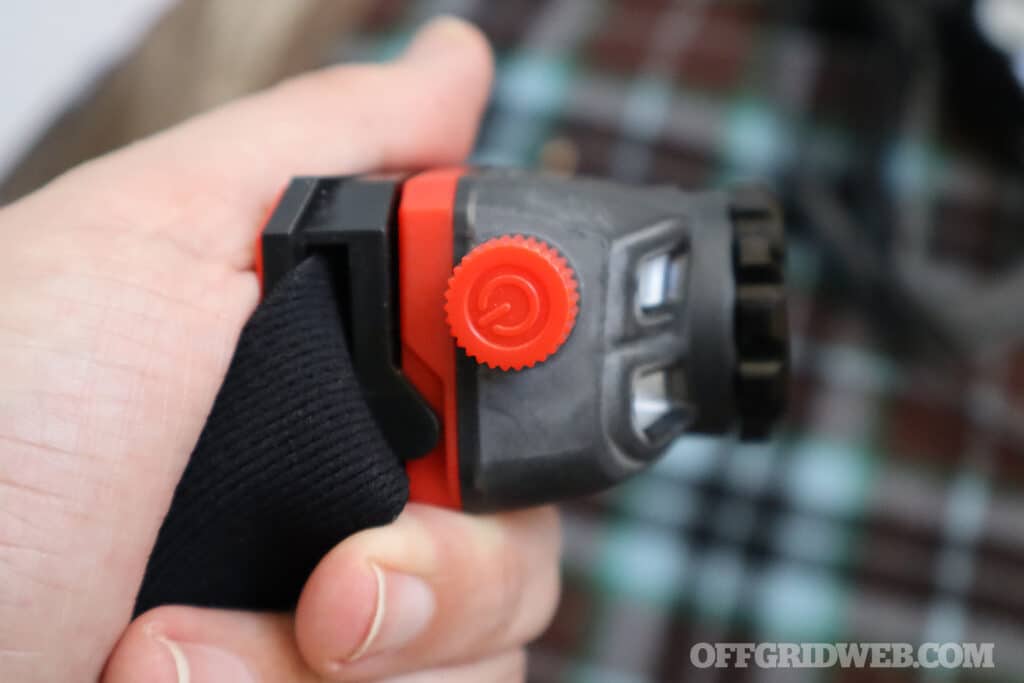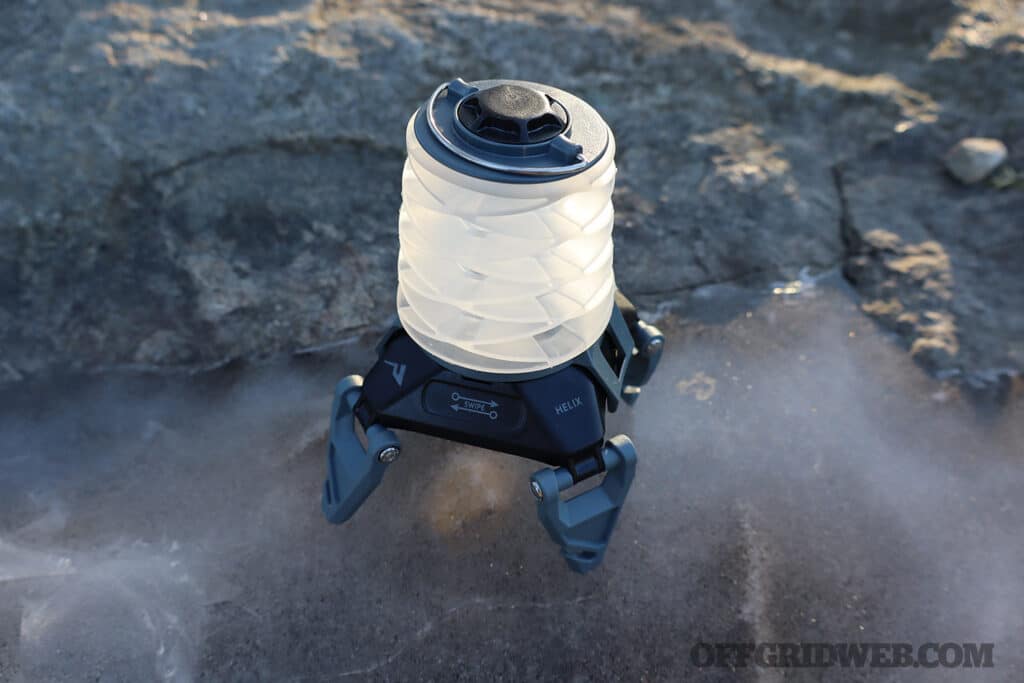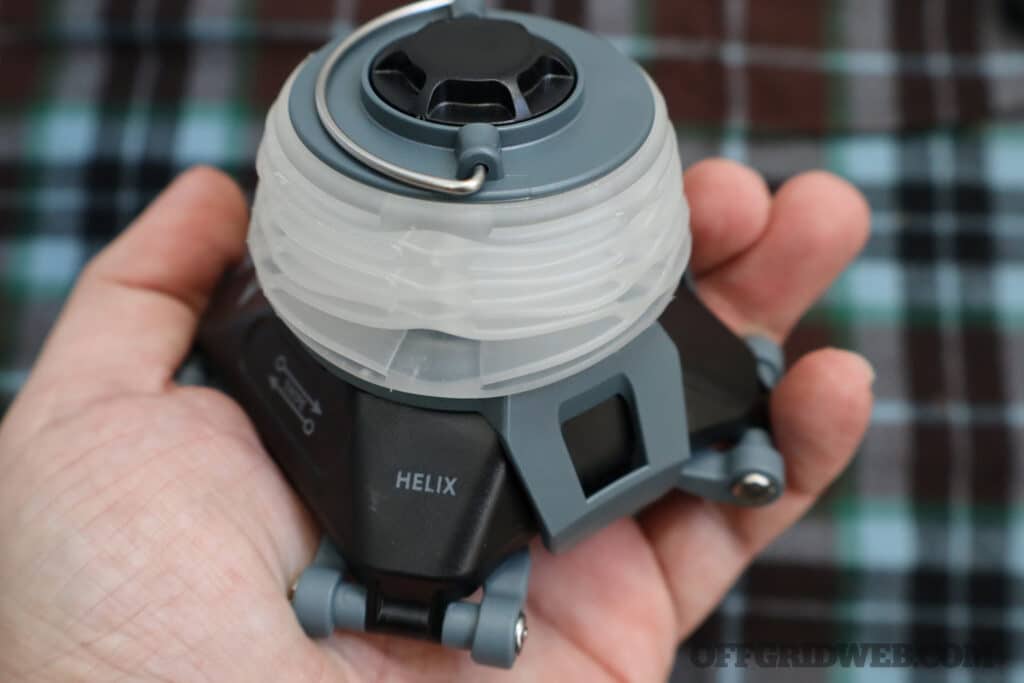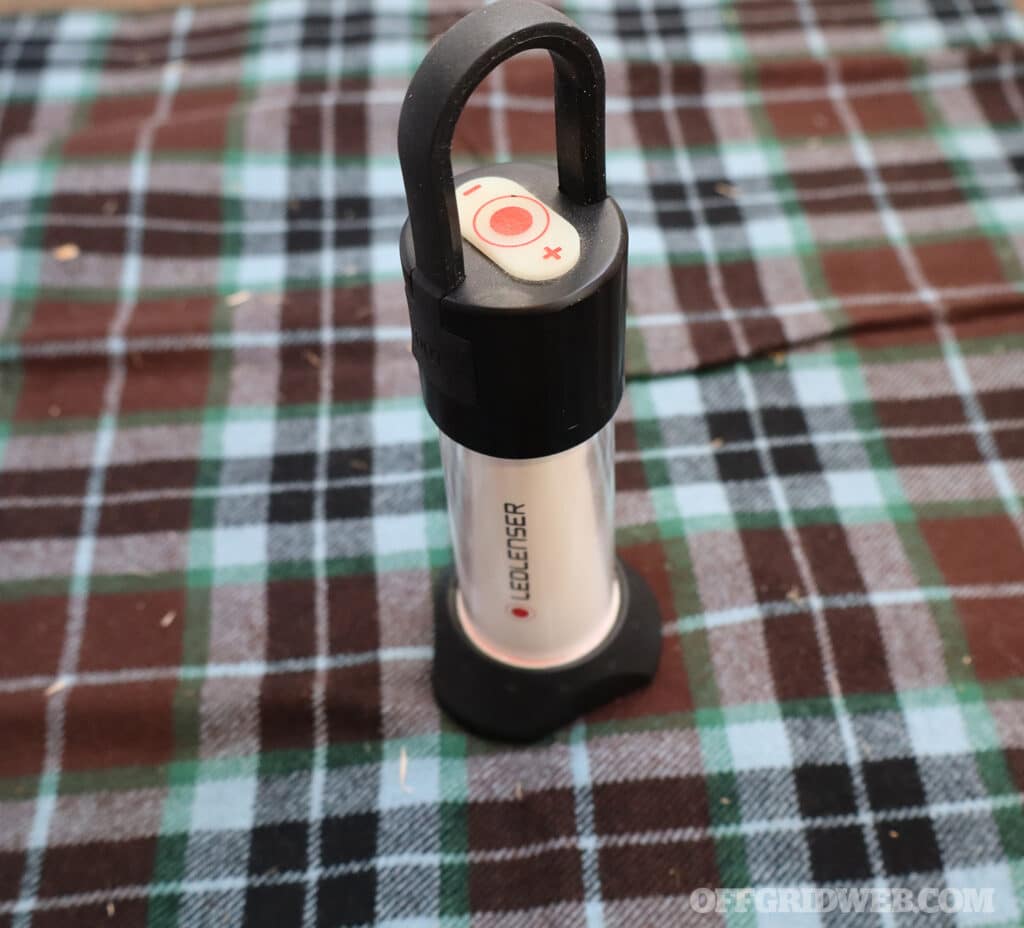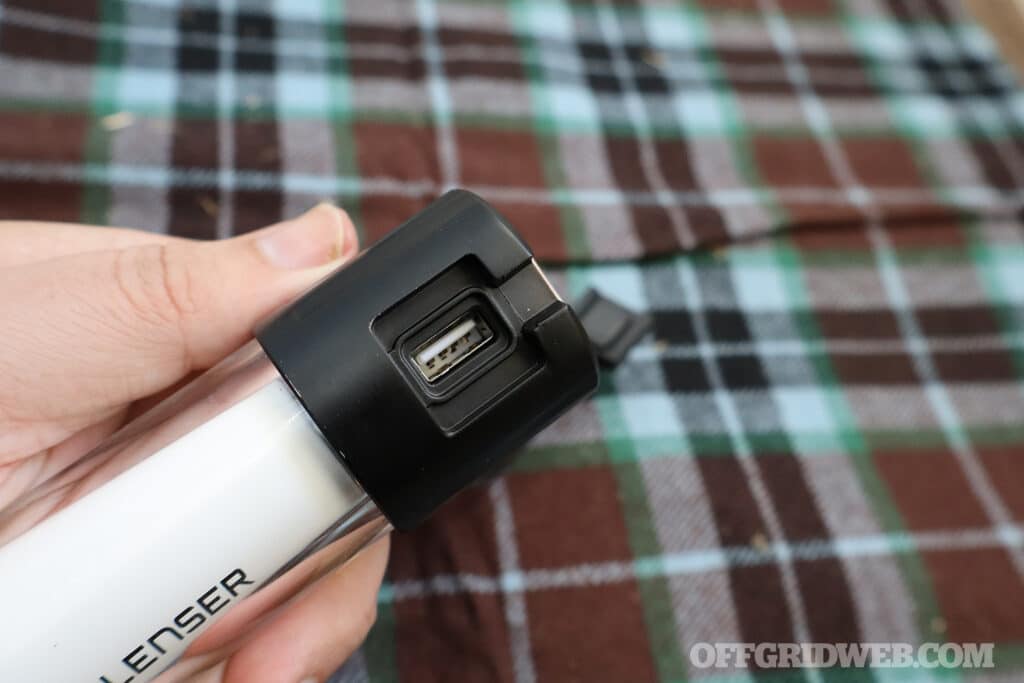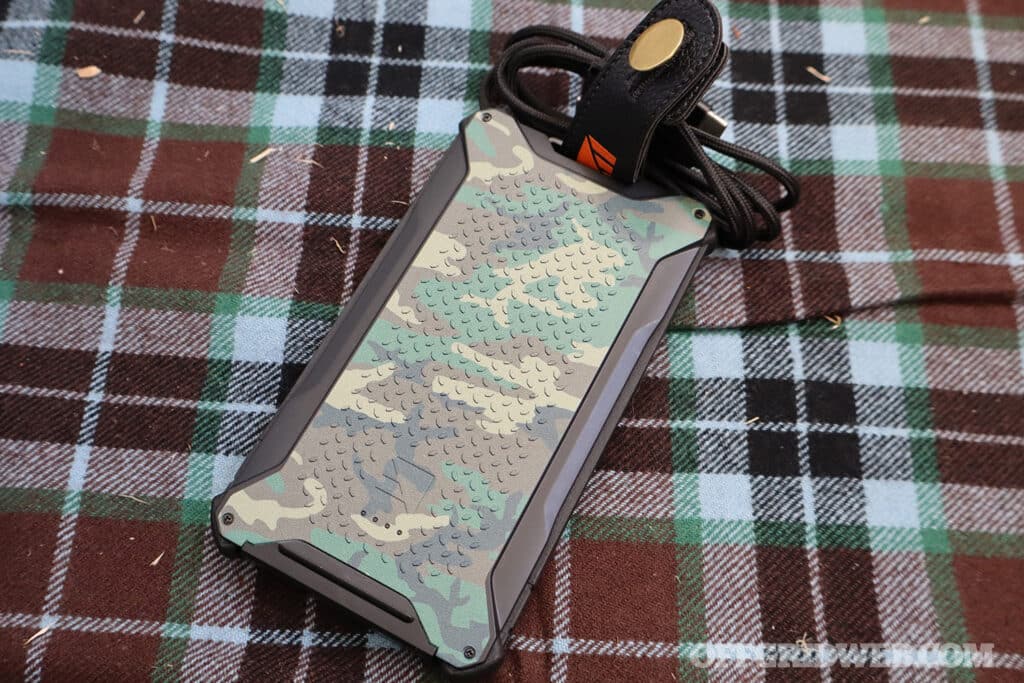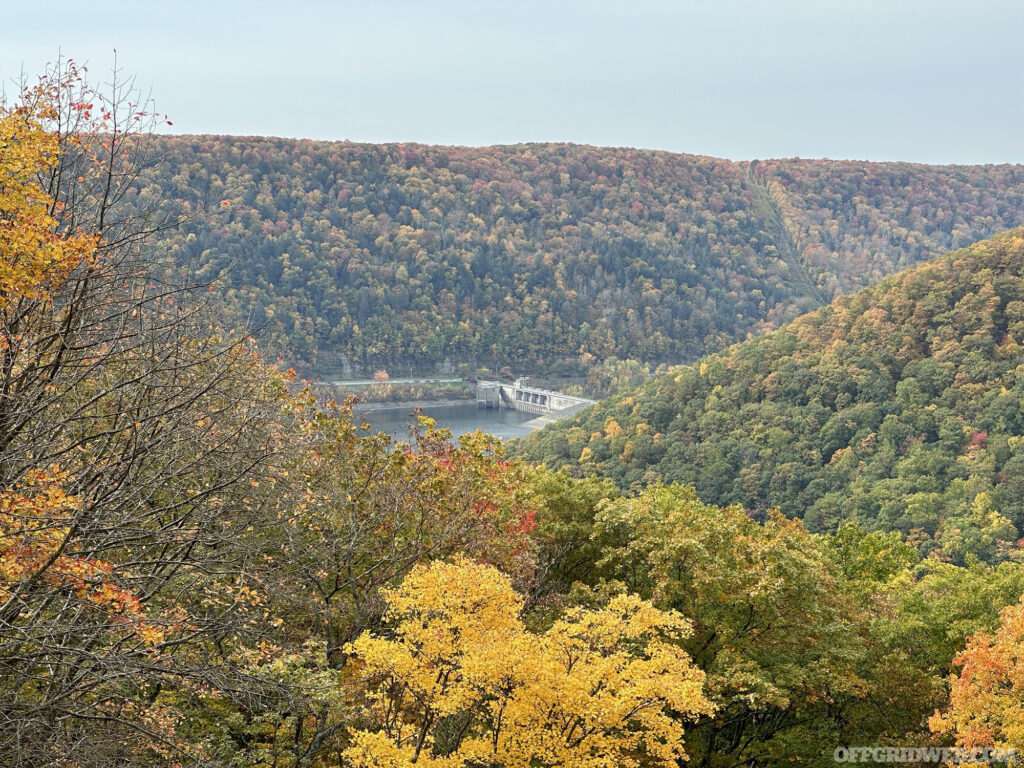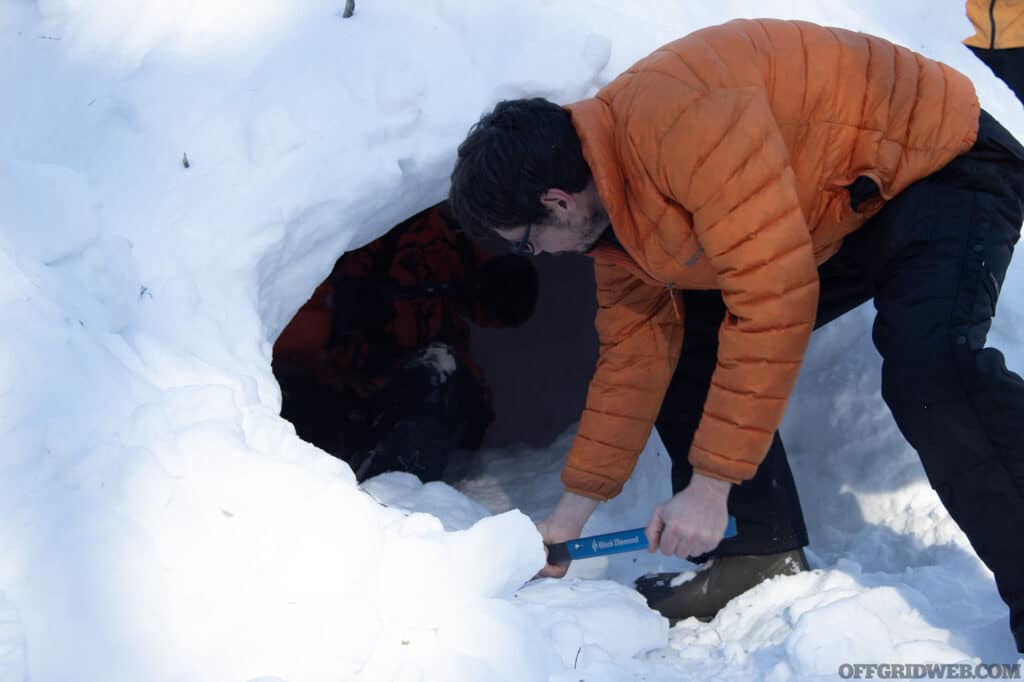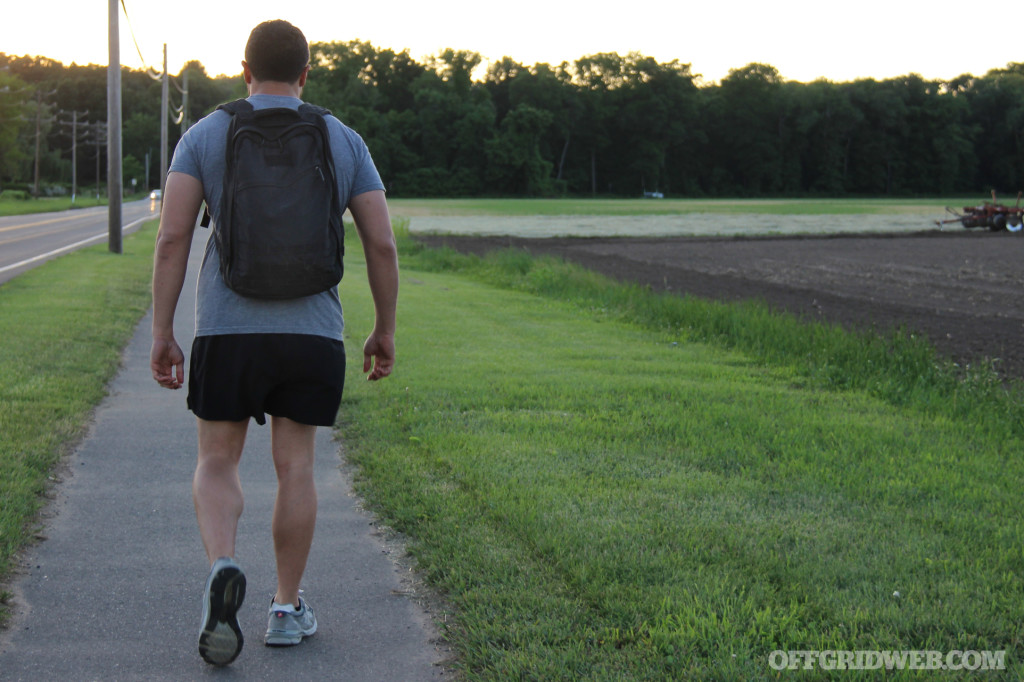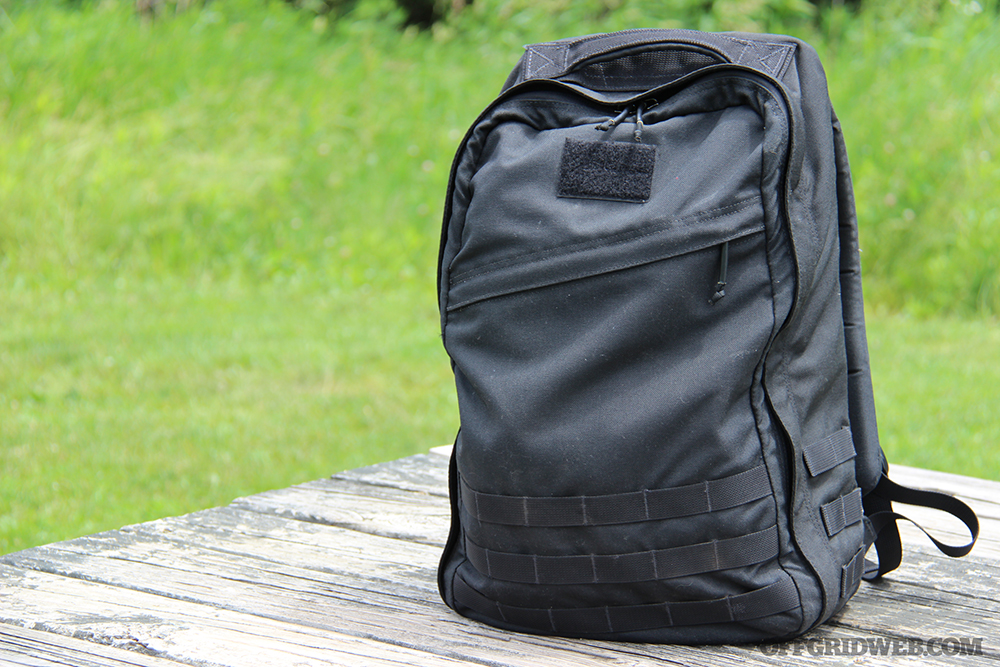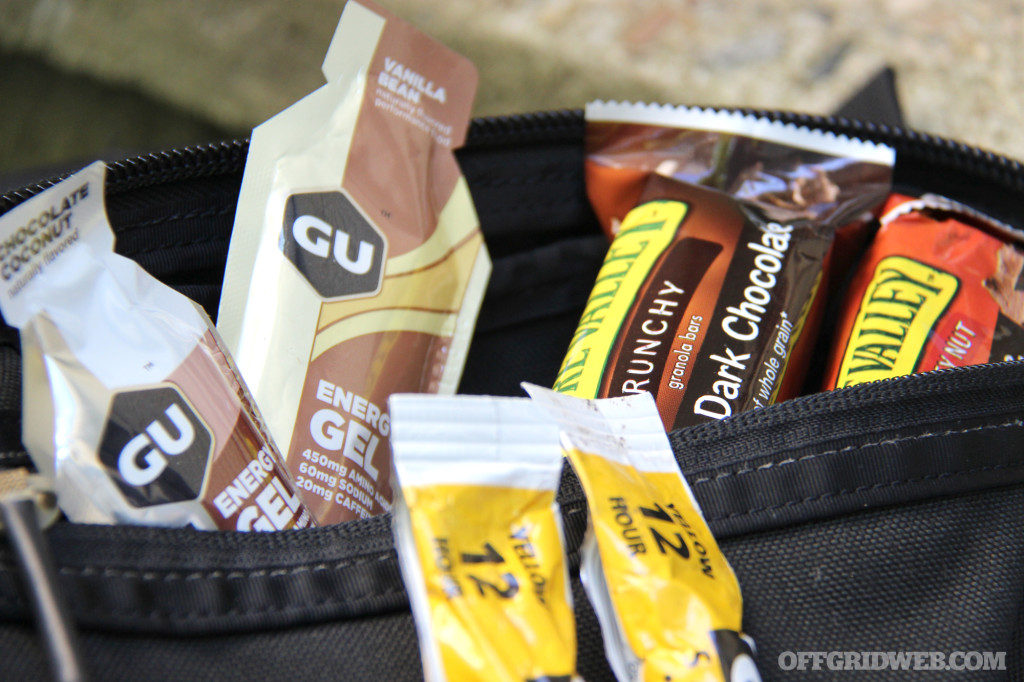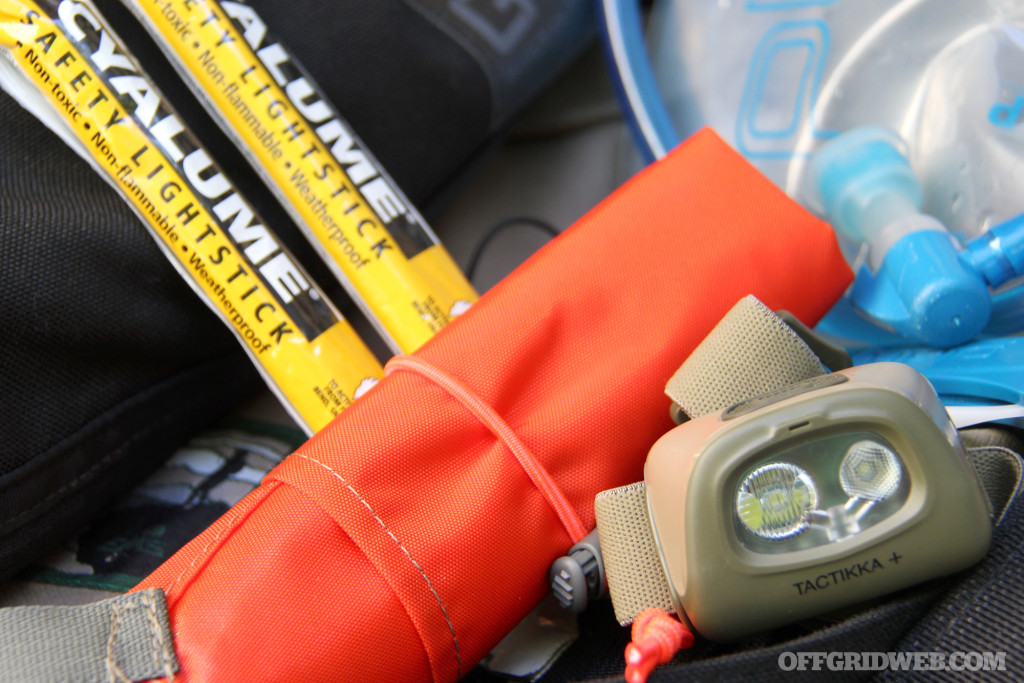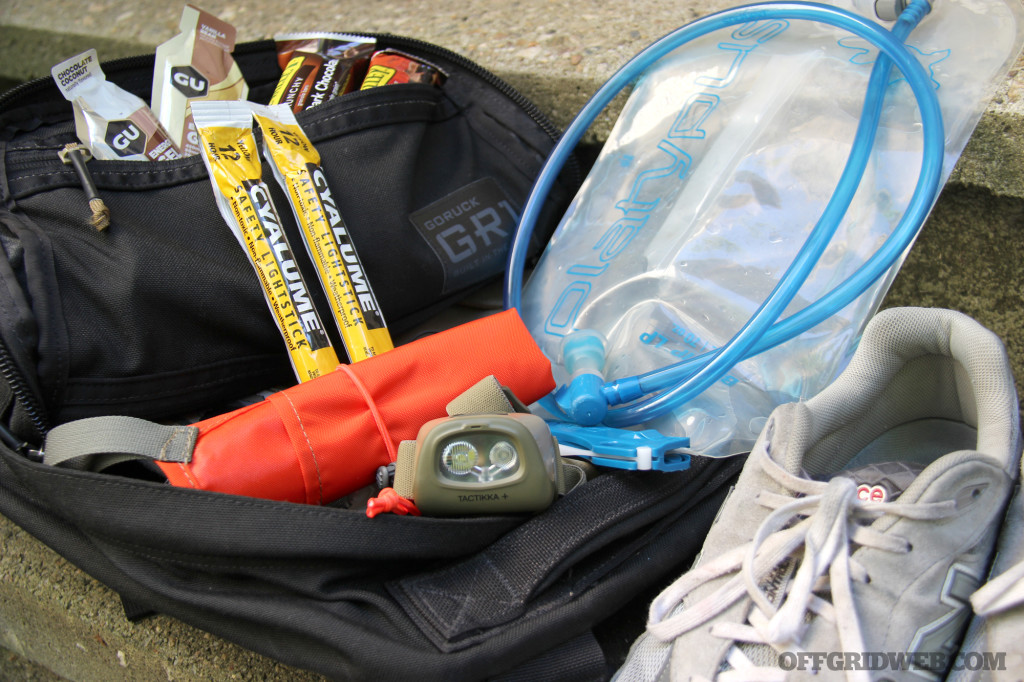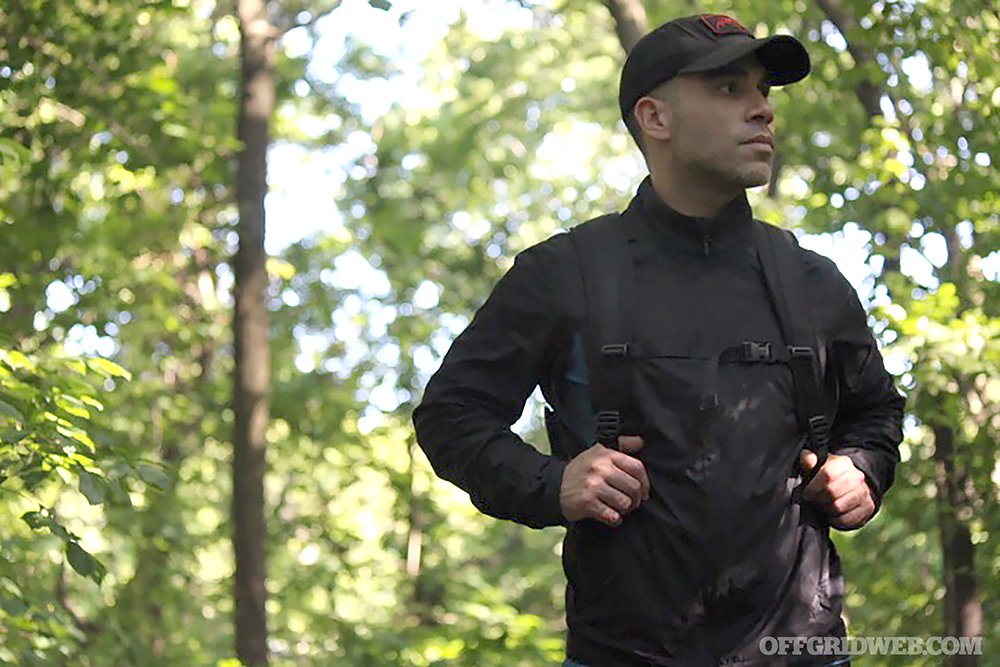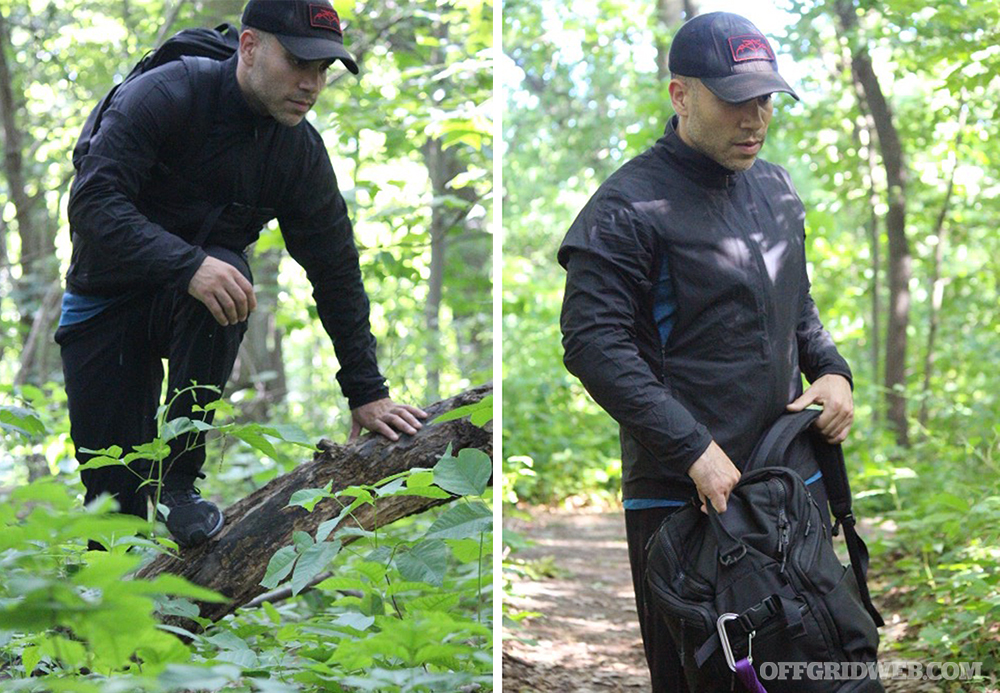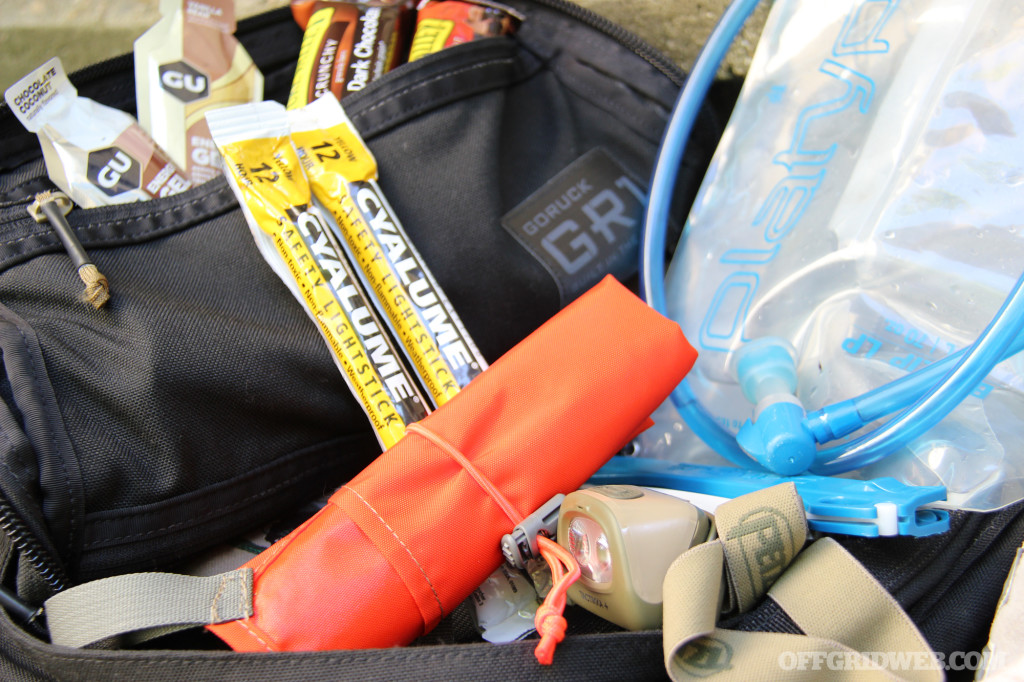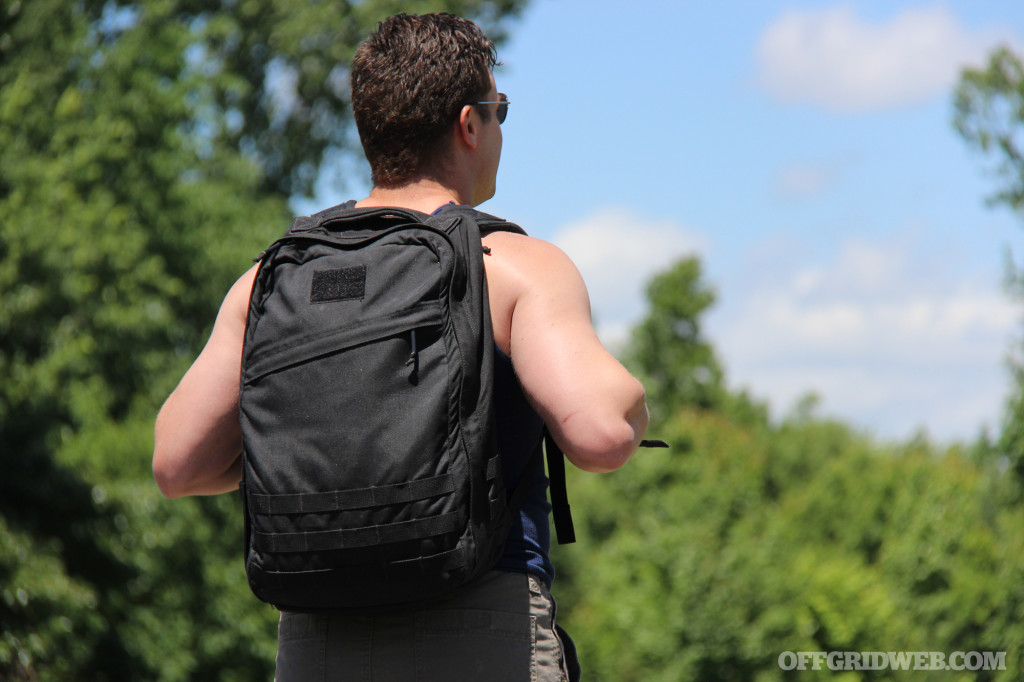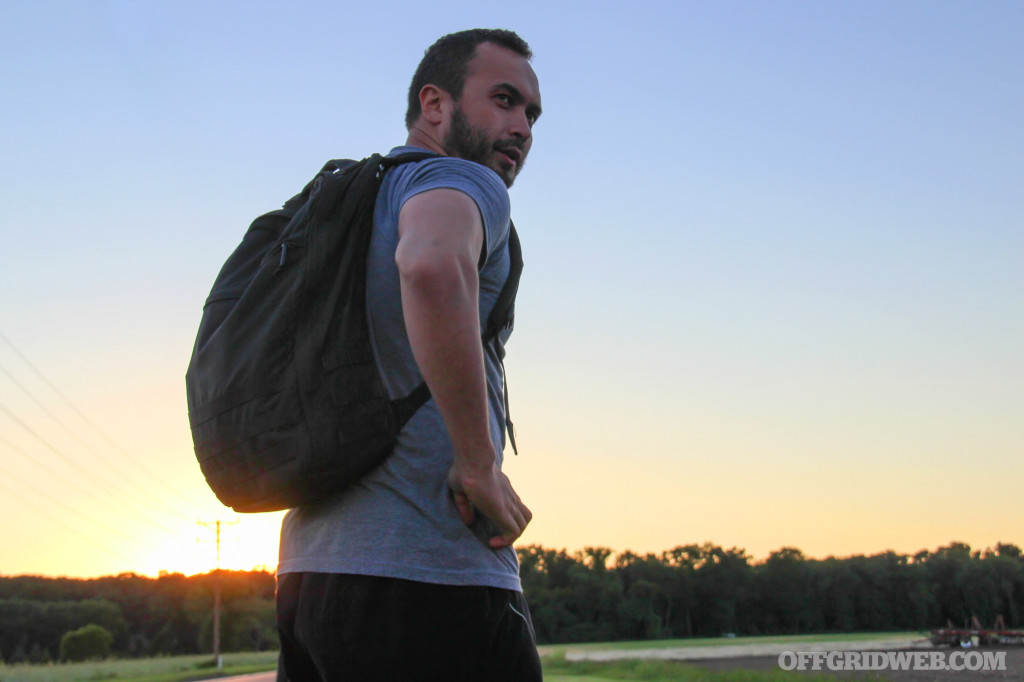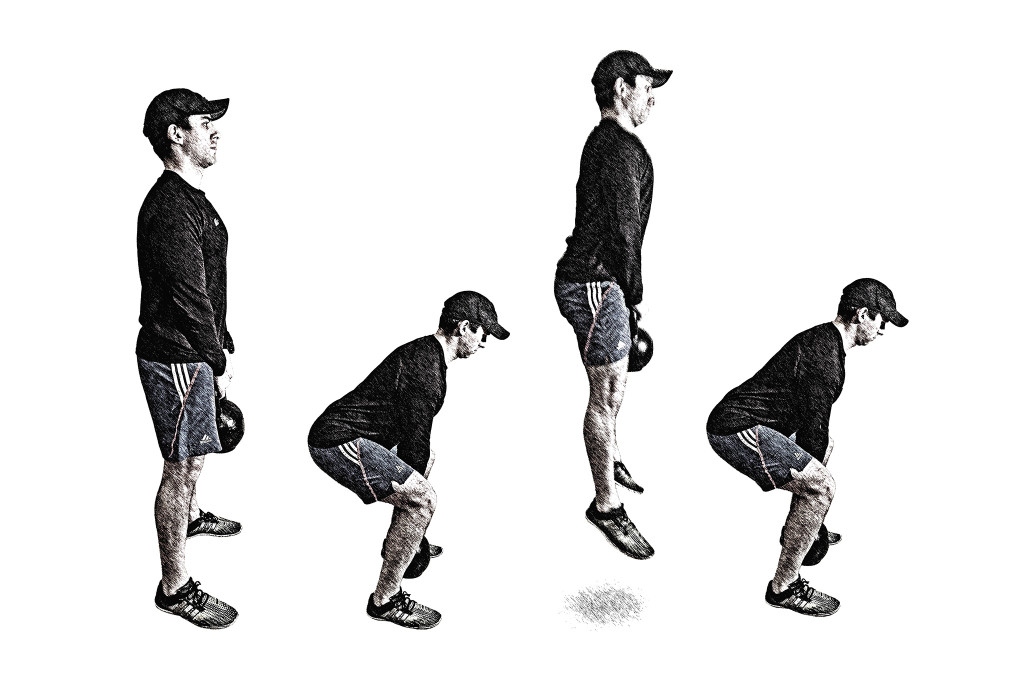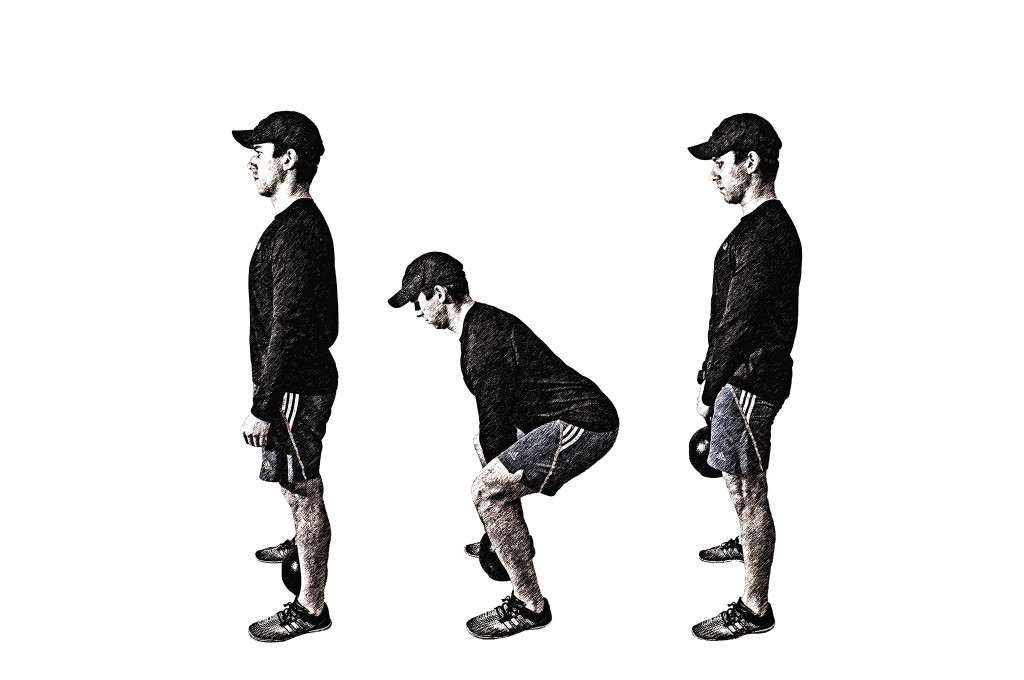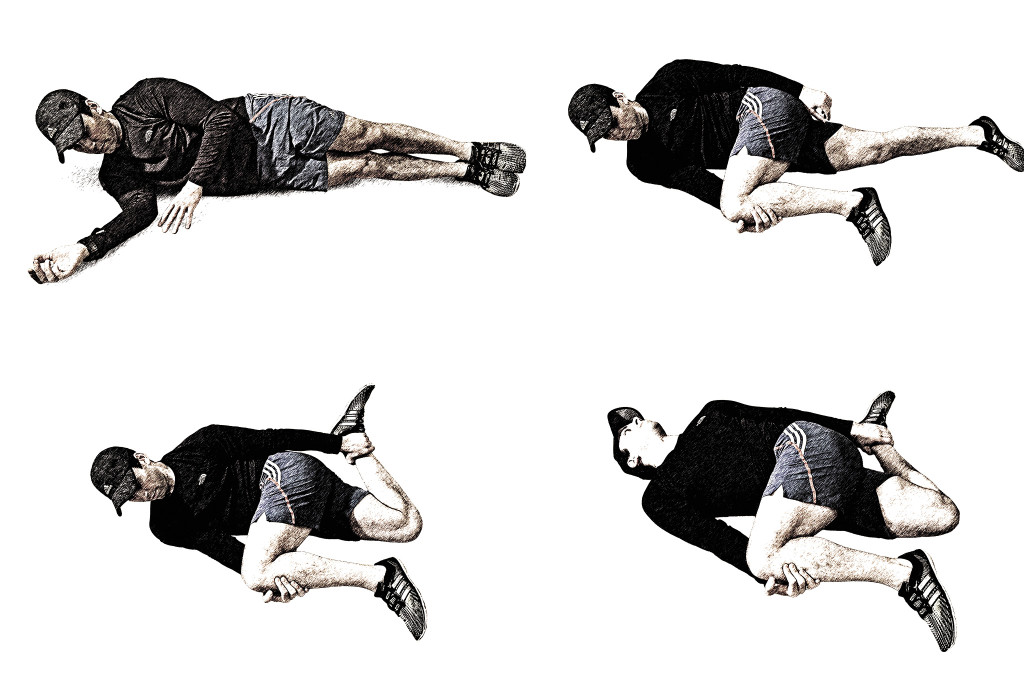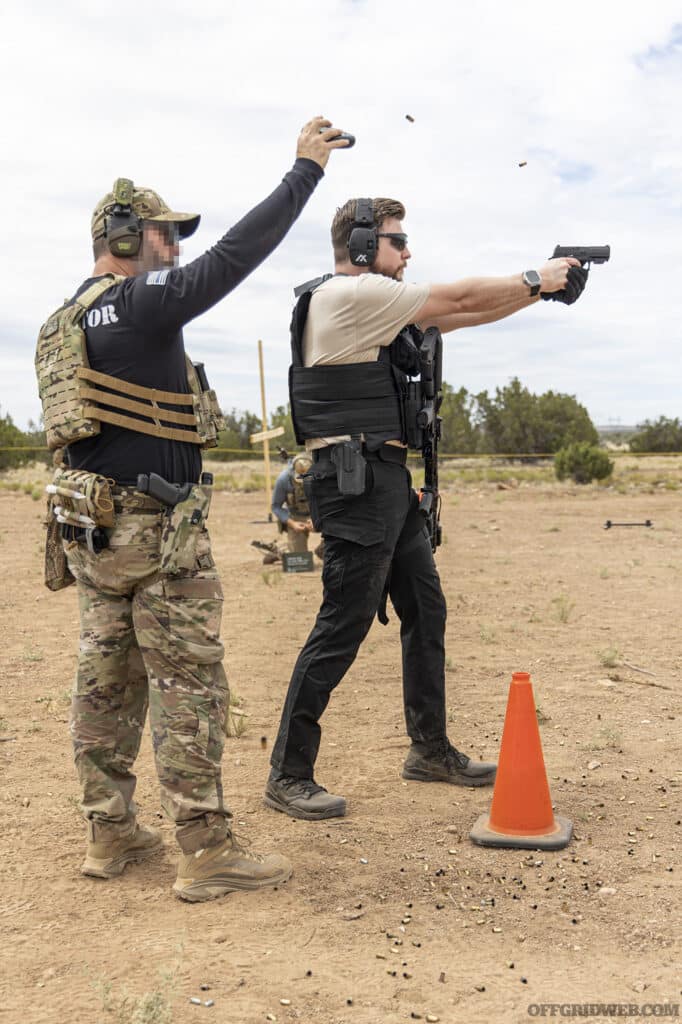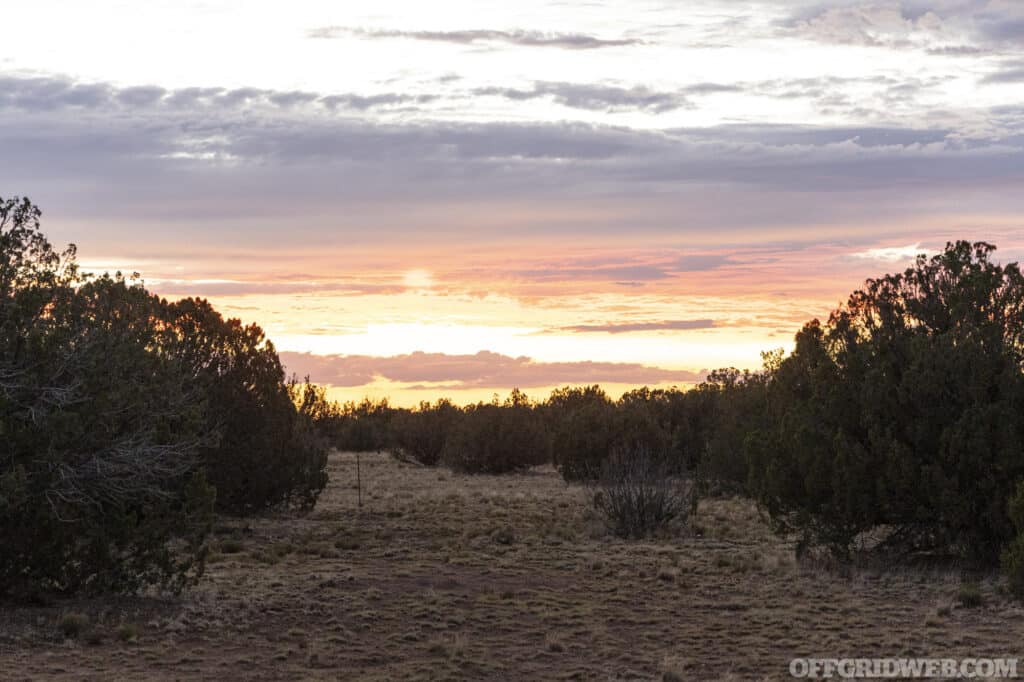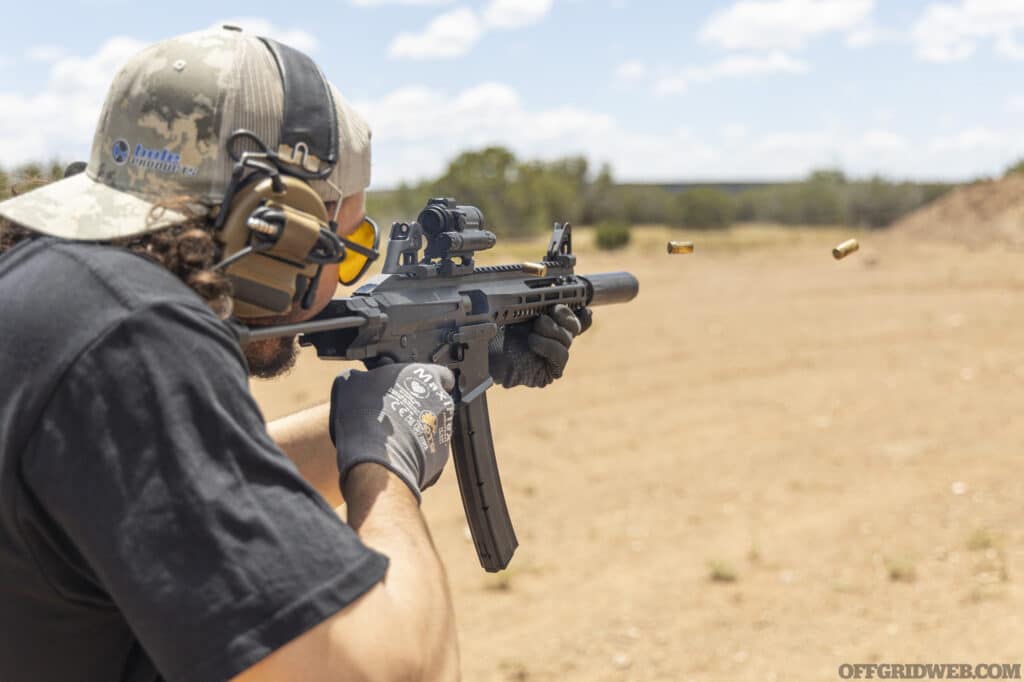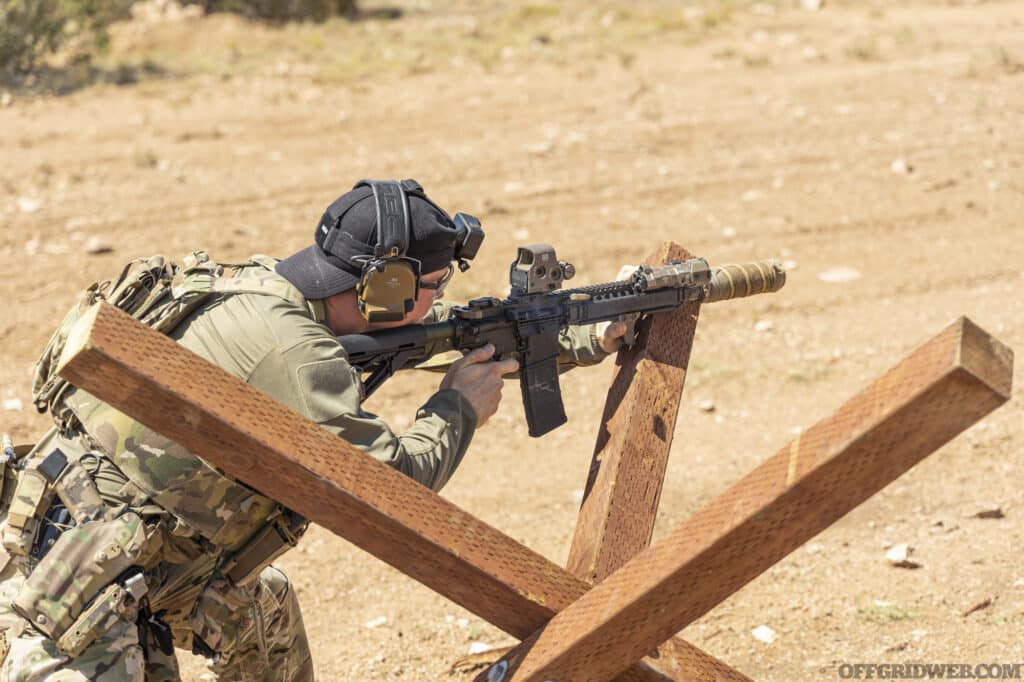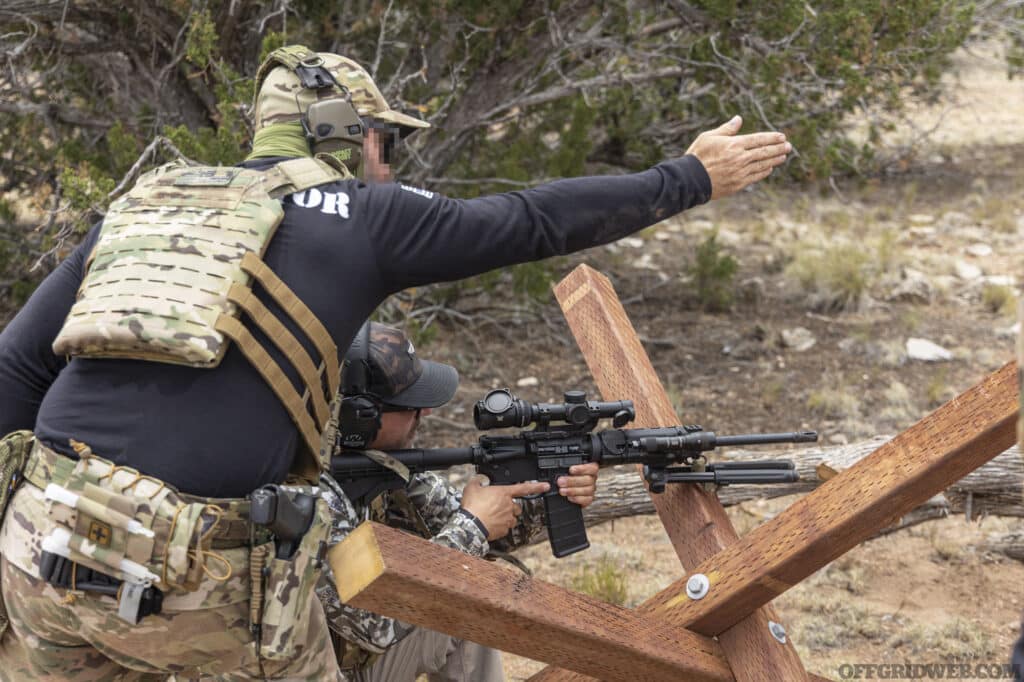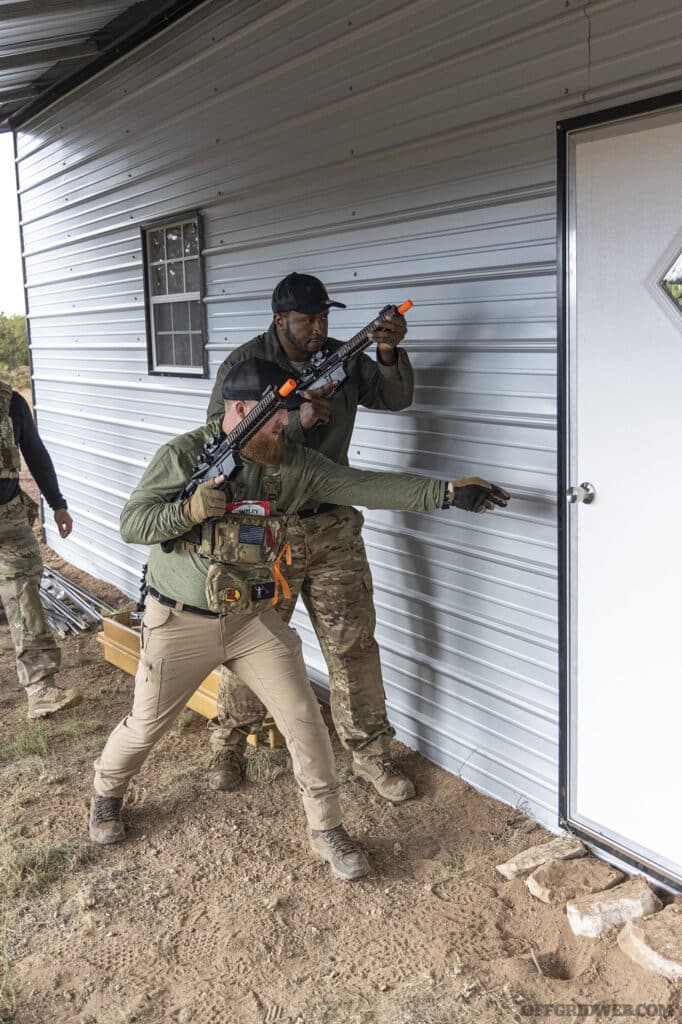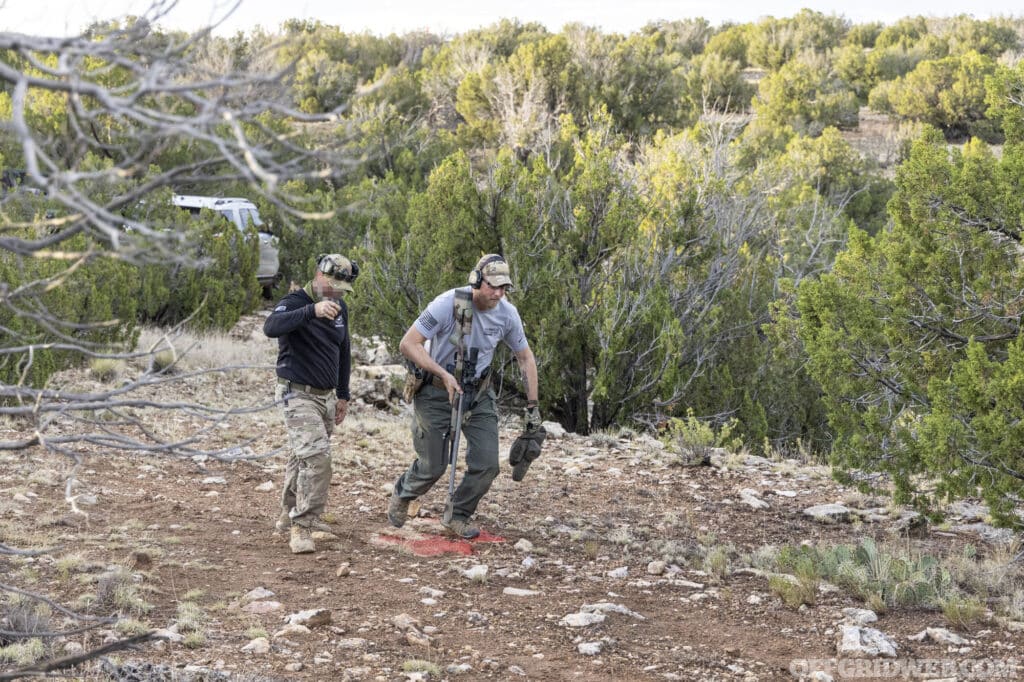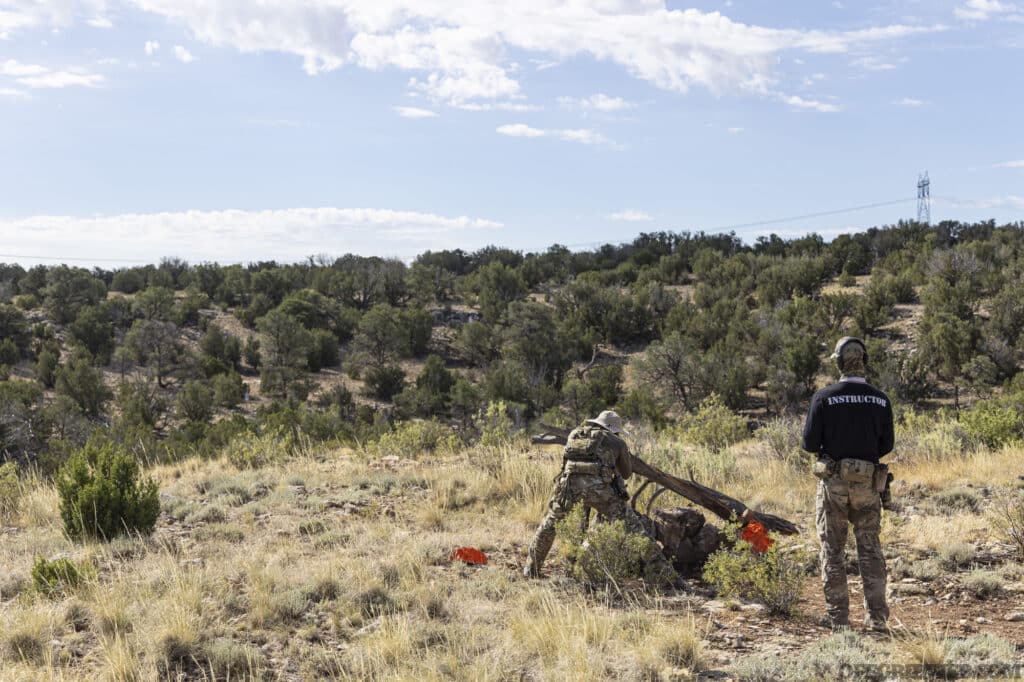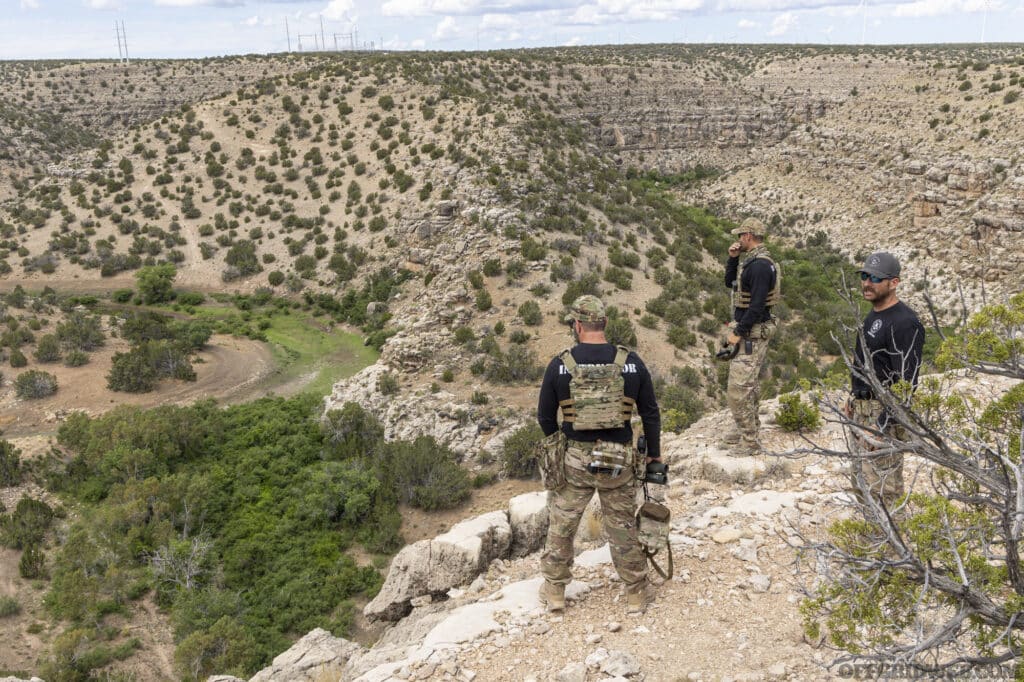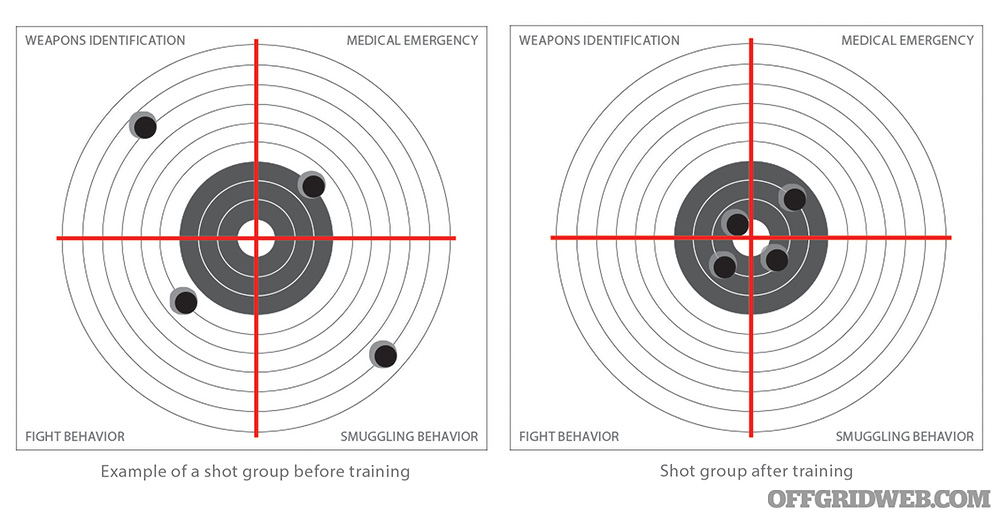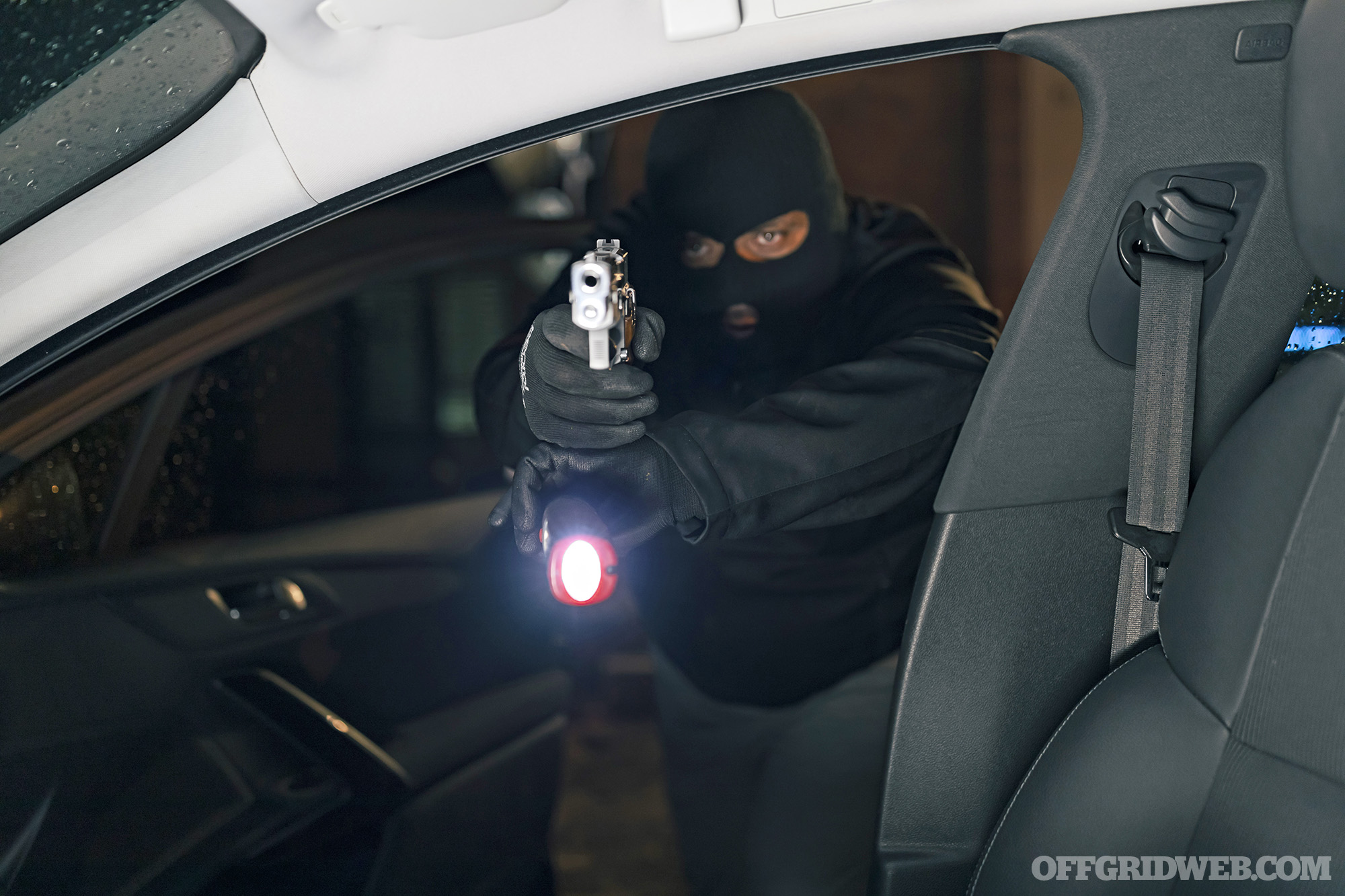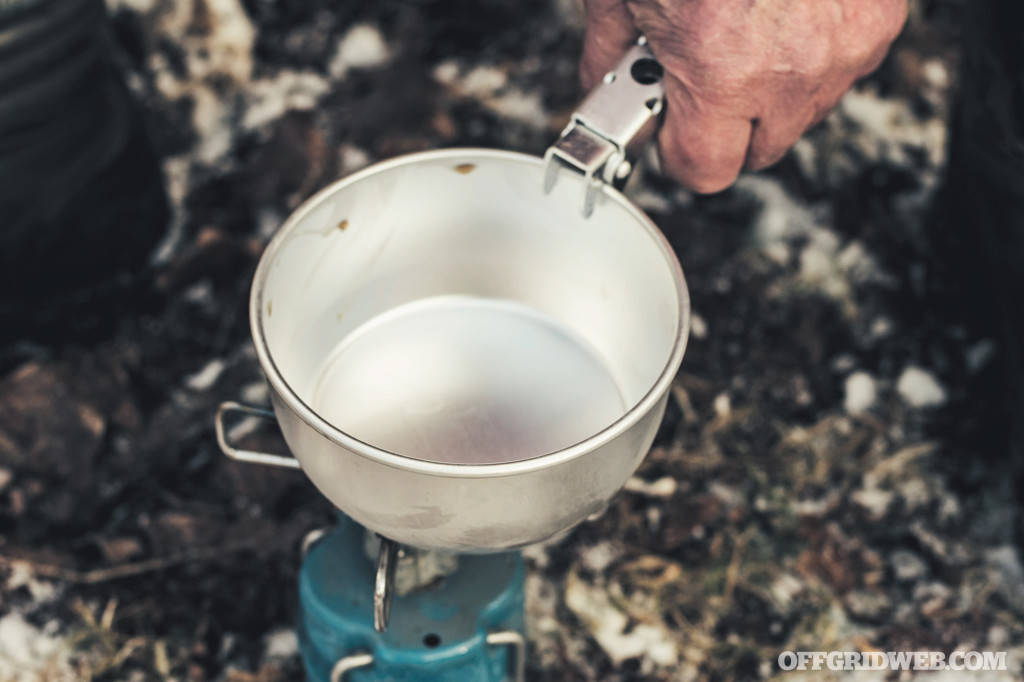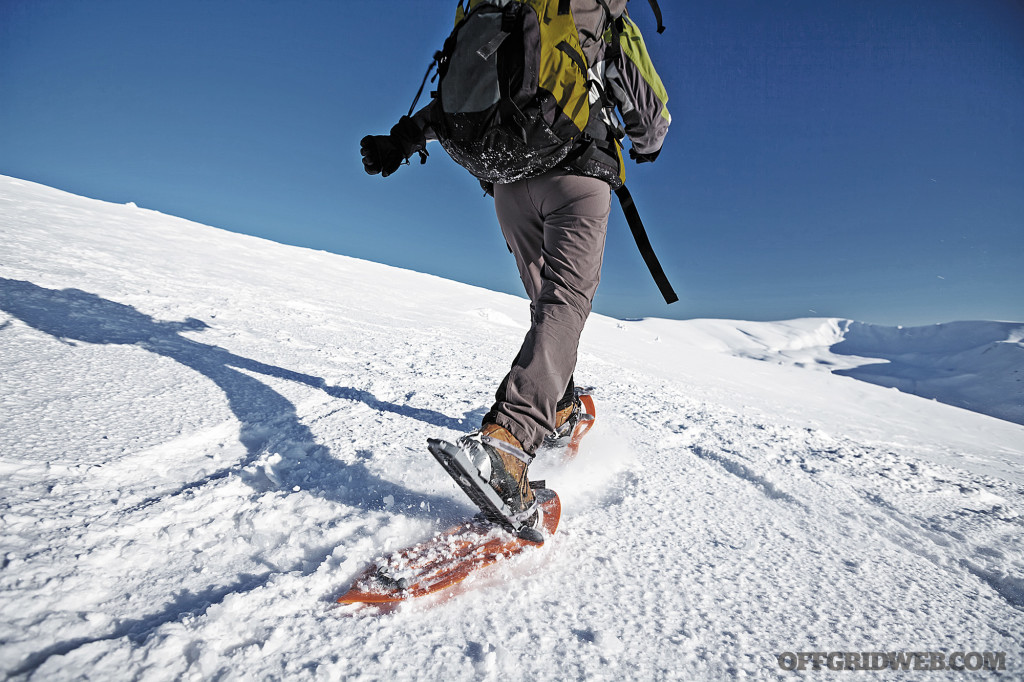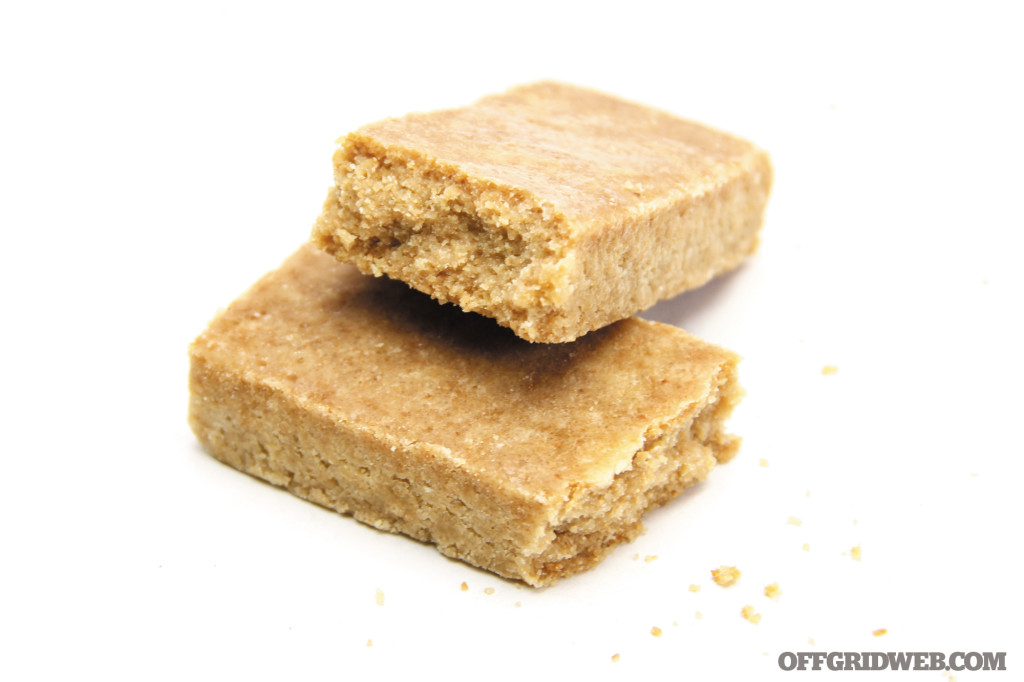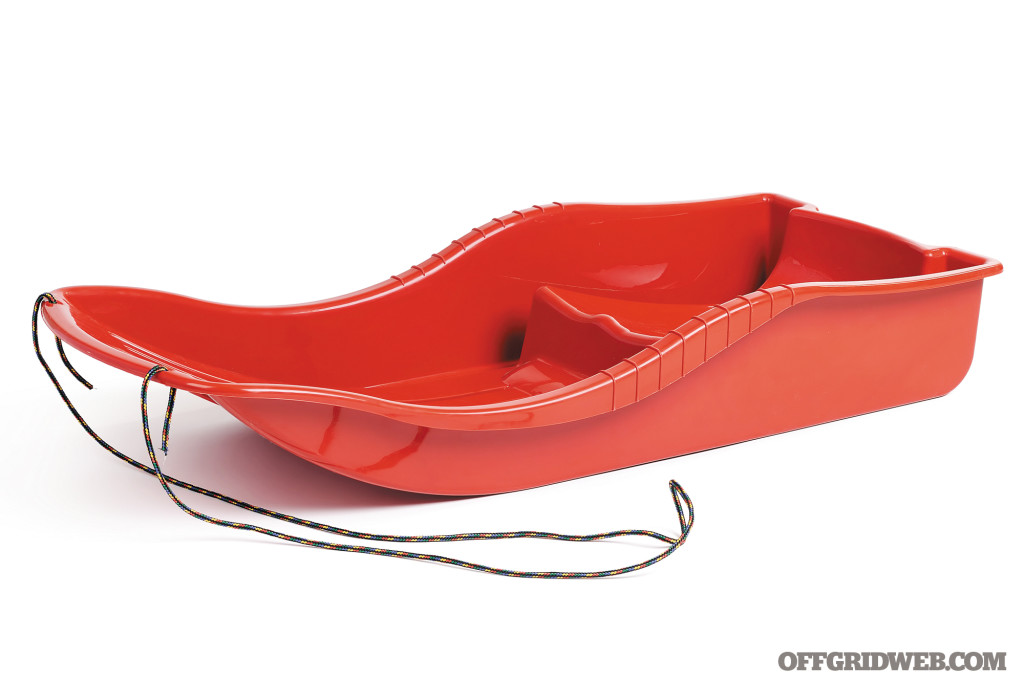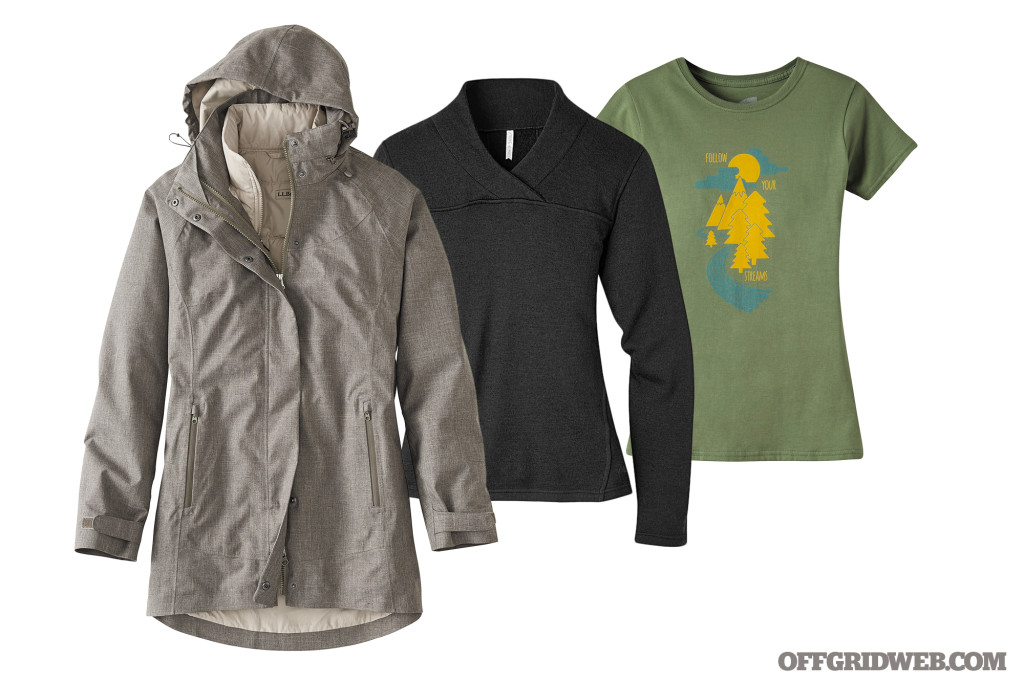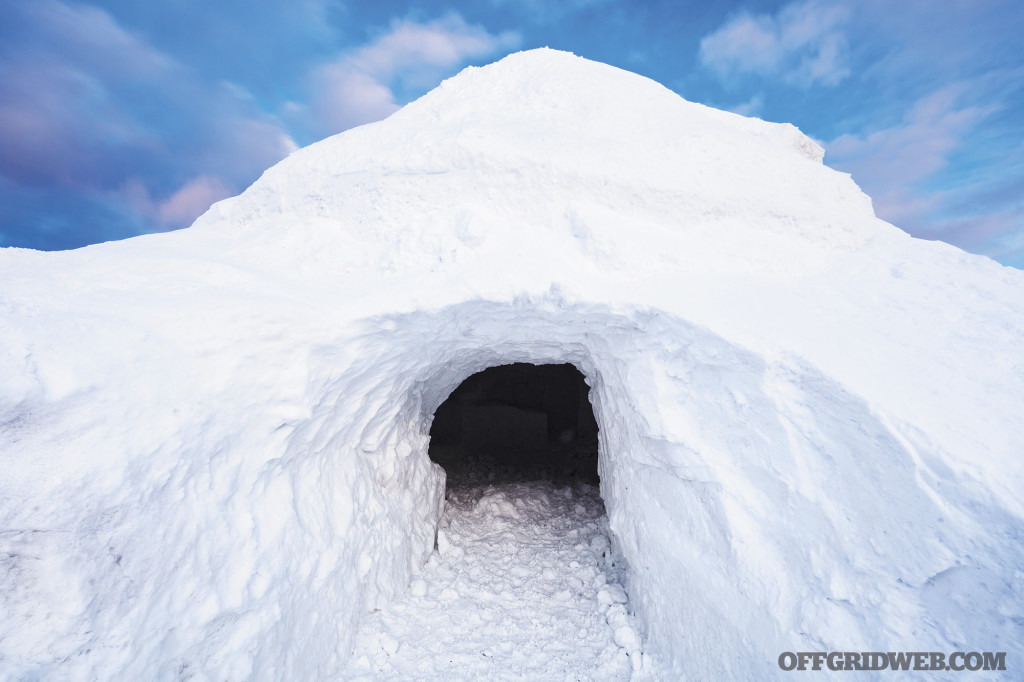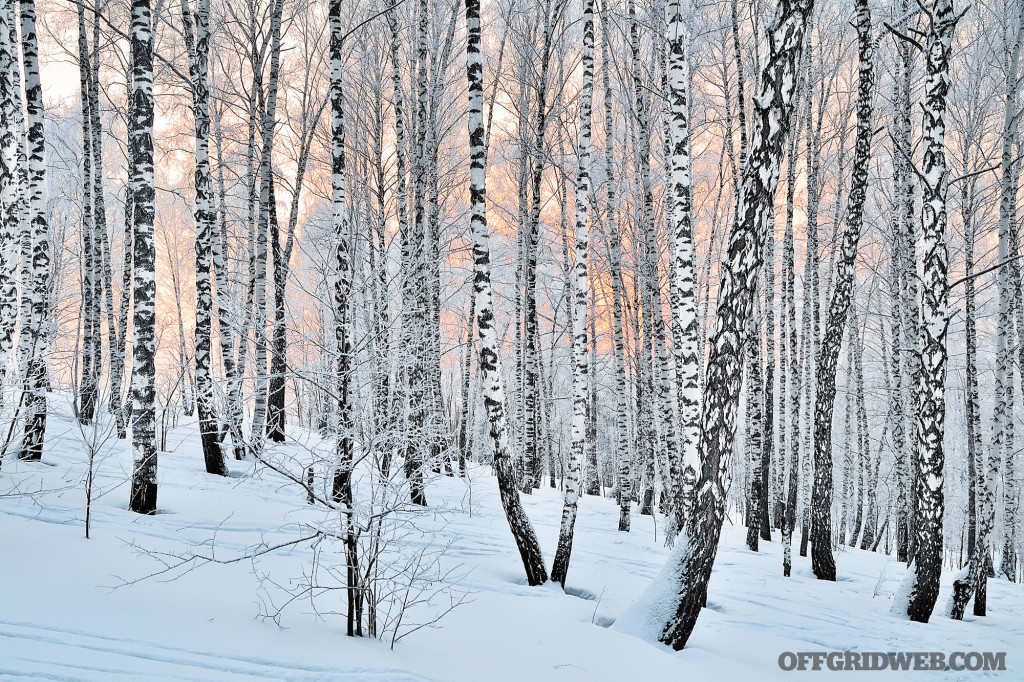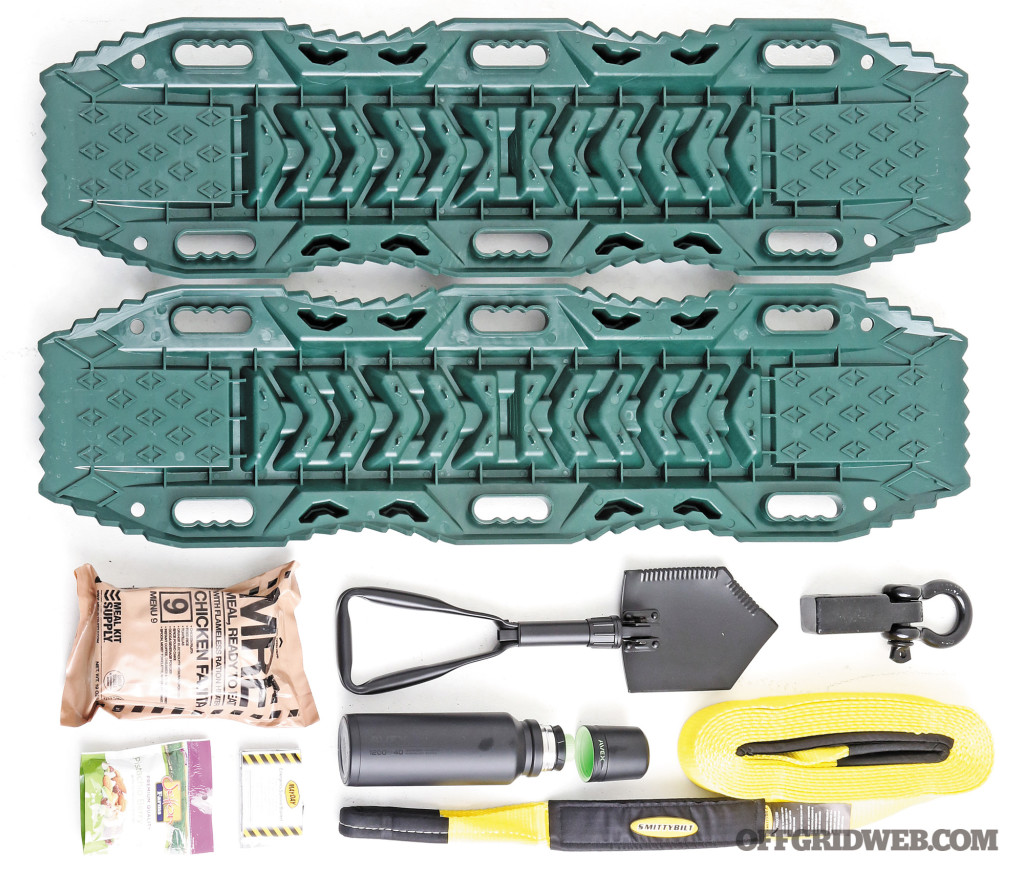In This Article
This article about cold weather fitness originally appeared in Issue 6 of our magazine.
Warning! The exercises and content expressed in this column are for illustrative purposes only. Consult a licensed fitness trainer or medical professional before trying any physical activity or nutritional plan.
Illustrations by Chris Bywater
Who enjoys spending time frolicking in frigid temperatures? Exactly. As a result, staying warm and cozy indoors often comes at the expense of physical activity. Humans were never meant to hibernate, contrary to what most people do after Thanksgiving dinner or what teenagers think when they’re forced out of bed on a Saturday morning. We don’t always have the luxury of a heated building with a roof over our heads, so our ability to cope with the environment is critically important to our ability to not only survive, but thrive in a cold weather scenario.
Winter can present many challenging situations and force you into an uncomfortable, possibly even dangerous environment for an indeterminate amount of time. Icy road conditions often lead to increased traffic, car accidents, and vehicle breakdowns. Getting stranded can mean being stuck on the side of the road waiting for a tow truck or a lengthy trek through knee-high snow.
Maintaining or improving your cold weather fitness level is essential in freezing conditions, as your chances of escaping a potential hazard drops as the mercury falls. Don’t let your fitness level be the weak link in your chain of preparedness.
Cold Weather Fitness: Frosty Fashion
When it comes to cold-weather apparel, the primary goal is to keep your core (torso) warm. Core warmth must always be maintained. When core temperature drops, blood vessels constrict in the extremities to reduce blood flow and conserve heat. Reduced blood to the hands and feet leads to diminished motor control and other physiological side effects. It’s obvious, then, that your clothing will make or break your survival.
For the base layer, prioritize tighter-fitting moisture-wicking fabric, as you still might sweat regardless of the temperature. The second layer should be a thermal layer designed to trap heat well. These are made in varying thicknesses and fabrics, so look to match the fabric to the temperature. The colder it is, the thicker the fabric should be to trap more heat. Lastly, the outermost layer should be waterproof and windproof. Protection from the elements is the top priority. This layer will also act to prevent heat from escaping through the fabric. Make sure to choose colors that fit the activity, as brighter colors will allow you to be found in snow more easily.
The face and extremities are at the highest risk for developing cold injuries due to skin exposure and blood flow alterations. The less skin exposed, the better. Therefore, gloves are mandatory. They maintain manual function and movement, as well as provide a layer of paw protection — because who knows what you’ll have to do when you’re suddenly caught in an emergency. The head can be a significant source of heat loss in cold weather. It’s best to wear a facemask (similar to a balaclava) that covers everything from your neck to the top of your head. The breathing of cold and dry air is a major issue with physical activity in the cold, so the mask will allow air to be warmed and humidified before inhaling. Heat loss and, potentially, dehydration can occur if your breathing rate gets high enough.
Once you’ve selected your winter clothes, don’t be alarmed if you feel just a little chilly for the first five to 10 minutes of activity. If you’re feeling warm immediately, the heat generated through exercise will end up causing you to overheat, possibly leading to heat stress — believe it or not.
Cold Weather Fitness: Warming Up
A properly designed warm-up is the critical starting point to any workout or physical endeavor. While you may be able to get by without one, you’re increasing the likelihood of injury and, at the very least, reducing your output during that activity.
A warm-up should address key things like increasing bodily tissue temperature, improving joint mobility and flexibility, priming your nervous system, and improving posture and alignment. Within this warm-up, it’s best to address the more mobile joints of the body, such as the hips, ankles, and thoracic spine.
For ankles, the wall ankle mobilization with hip flexor stretch is very beneficial. The “Spiderman” works well to gain mobility in the groin and stretches the back hip as well. The thoracic spine features both extending and rotating requirements, so something like a tall kneeling thoracic spine rotation with tip works very well. You can also put them together into a Spiderman with a rotation, addressing all three areas in one movement.
Cold Weather Fitness Activity: Wall Ankle Mobilization with Hip Flexor Stretch
Targets: Ankles, hip flexors
Repetitions: 8 per side
Start with one knee down and the other foot planted in front of you. Grab the ankle of the back foot and place your other hand on the wall. Slowly rock forward, attempting to get your knee to the wall while keeping your heel down. Complete eight times per side.
Cold Weather Fitness Activity: The Spiderman
Targets: Groin, hips, hamstrings
Repetitions: 6 per side
Take an exaggerated step forward and place your hands on the floor in line with the instep of your front foot. Complete six times per side.
Cold Weather Fitness Activity: The Spiderman with Rotation
Take an exaggerated step forward with your left foot and place your hands on the floor in line with the instep of your left foot. Now turn your upper body and point your right fingers toward the ceiling. Complete six times then do the same on your left side.
Cold Weather Fitness Activity: Tall Kneeling Thoracic Spine Rotation with Tip
Targets: Back
Repetitions: 3 per side
Start in a kneeling position with both knees down. While staying tall, rotate from your upper back with your hands behind your head. Your hips should remain forward. Once you turn as far as is comfortable, tip your torso on the same side as the direction you’re turning. Repeat, turning a little further each time. Complete three times on each side.
Cold Weather Injuries
The lack of proper apparel, gear, and fitness can lead to numerous injuries in frigid weather. Here’s a brief look at some of the common ailments.
Cold and Wet Injuries
Chilblain
Looks: Lesions on the top side of the hands and feet. Redness and swelling. More extreme cases can progress to blisters and ulcers. May take months or years for symptoms to subside
Feels: Itching and soreness
Causes: Damage to the blood vessels located near the exterior layers of the skin. Result is local fluid accumulation (edema) and inflammation.
Pernio
Looks: Larger lesions on the tops of the hands and feet. Lesions and skin may begin to appear darker in color.
Feels: Itching and pain
Causes: Continuation of chilblain. Further ulceration and the start of tissue death.
Trenchfoot
Looks: Swelling, skin discoloration, ulcers present
Feels: Numbness and pain
Causes: Severe damage to the nerves and local blood vessels
Cold and Dry Injuries
Frostnip
Looks: Reduced skin coloration or white appearance on the affected areas
Feels: Tenderness, numbness, or burning
Causes: Initial freezing of the skin. Nerves and capillaries may be damaged. Increases chance of further frostnip and frostbite, due to decreased sensation of cold and decreased blood supply.
Frostbite
Looks: Redness or possibly black skin on the affected areas
Feels: Numbness and tenderness. With rewarming, can cause feelings of intense pain, inflammation, and possible gangrene. (Medical rewarming is highly advised rather than in the field).
Causes: Continued cooling, freezing, and damaging of cells
Source: Advanced Environmental Exercise Physiology by Stephen Cheung
Cold Weather Fitness Modifications
Cold weather requires a few minor exercise modifications that should be addressed to further the effectiveness of a warm-up. Since the topic here is staying active and preparing for cold weather scenarios, it’s safe to assume the ambient temperature will be pretty frosty. In light of that, increasing tissue temperature is weighted a little more heavily.
Passive, pre-warm-up strategies can be used prior to exercise to further your preparation for cold weather exposure. The most obvious way is to spend five to 10 minutes in a warmer environment wearing warm clothes to raise your body temperature and trap heat in your clothing. You can also consume a warmer beverage, such as tea or coffee. Not only does the heat of the drink help to elevate body temperature, the caffeine can also improve performance.
Look at adding more layers or warmer fabrics during your warm-up and activity. What fabrics and how many layers will depend on how cold it is. The goal in a warm-up should be achieving a light sweat. However, in the cold, sweating isn’t ideal as it’s an awfully efficient cooling mechanism. It’s best to shoot for a general feeling of increased warmth, but do your best not to break out into an all-out sweat.
Be mindful of hydration as well. Water can still be lost through sweating and even breathing. Exercise increases breathing rate to meet the demand of the activity, and with breathing, water vapor is lost, possibly leading to dehydration over time.
Whether it’s something planned or not, physical activity in the cold can present several challenges. Your ability to adequately sense cold and respond accordingly can be affected by several factors, including exercise-induced fatigue, depleted energy stores, and sleep deprivation. So, make sure you’re adequately rested and fed, ideally, before venturing outdoors for activity. Follow these tips, and you’ll be ready for whatever Old Man Winter has in store this year.
Why We Shiver
The involuntary shaking that comes in cold weather is the contraction of skeletal muscle, which helps convert energy to heat while minimizing mechanical movement.
- This is primarily driven by skin temperature
- The longer you’re exposed to a cold environment, the more muscle mass will be recruited
- Fueled primarily by carbohydrates
Temperature timeline:
- Shivering typically begins at a core temperature of 96.8 degrees F (36 degrees C)
- Reaches peak shivering at a core temperature of 95 degrees F (35 degrees C)
- Stops at a core temperature of 87.8 degrees F (31 degrees C)
Source: Advanced Environmental Exercise Physiology by Stephen Cheung
About the Author
Ryne Gioviano, M.S.Ed., NSCA-CPT is the owner of Achieve Personal Training & Lifestyle Design. He holds a master’s degree in exercise physiology and is a certified personal trainer through the National Strength and Conditioning Association. For more information, visit www.achieve-personaltraining.com. You can find Ryne on Twitter and Instagram at @RGioviano.

